Everyone has grown up hearing about Athens and Greece and how they started democracy and everything else the Modern World stands for. Luckily for us, a lot of Ancient Greece is still standing and open for visits! The Acropolis in Athens is one of the most recognizable ruins in the world and one that tops many peoples bucket lists and it’s also of course one of the best things to do in Athens! While we were getting ready for our visit to Greece, I saw a lot of conflicting information in terms of opening hours and prices for visiting the Acropolis so I wanted to put together this comprehensive guide of everything you could possibly need to know before visiting the Acropolis! Read on for the most important information and leave me a comment if you have any further questions!
Table of Contents
Hours & Prices
The Acropolis
So, when is the Acropolis open? Depending on what website you’re looking at you’ll get different answers but according to the official website of the Greek Ministry, the Acropolis is open every day between 8 am and 5 pm (last admission is 4:30 pm) in the winter and between 8 am and 8 pm (last admission is 7:30 pm) in the summer (starting April 1st). The exception is the following days that it is completely closed on: January 1st, March 25th, May 1st, Easter Sunday, December 25th and December 26th.
The ticket for the Acropolis is 20 euros during the peak-season (April 1st to October 31st) and is reduced to 10 euros if you visit in off-season (November 1st to March 31st). There’s a combo ticket which provides you entrance to six different ruins (The Acropolis, the Roman Agora, the Ancient Agora, the Archaeological Museum of Kerameikos, and Hadrian’s Library). In peak-season this ticket is 30 euros and in off-season the ticket is 15 euros. Unless you’re in Athens for only a day, I’d recommend getting the combo ticket because it’s valid for 5 days and a lot of the sites are fairly close to the center of Athens so they’re worth checking out!
A number of people qualify for free or reduced tickets as well (with proof of ID) so definitely check out the official website to see if you qualify for any of the reduced tickets (i.e. if you’re a EU senior over 65, an university student, tourist guides etc.).
There are some days where visiting the Acropolis is completely free: March 6th (in memory of Melina Mercouri), April 18th (International Monuments Day), May 18th (International Museums Day), the last weekend in September (European Heritage Days), October 28th and every first Sunday from November 1st to March 31st!
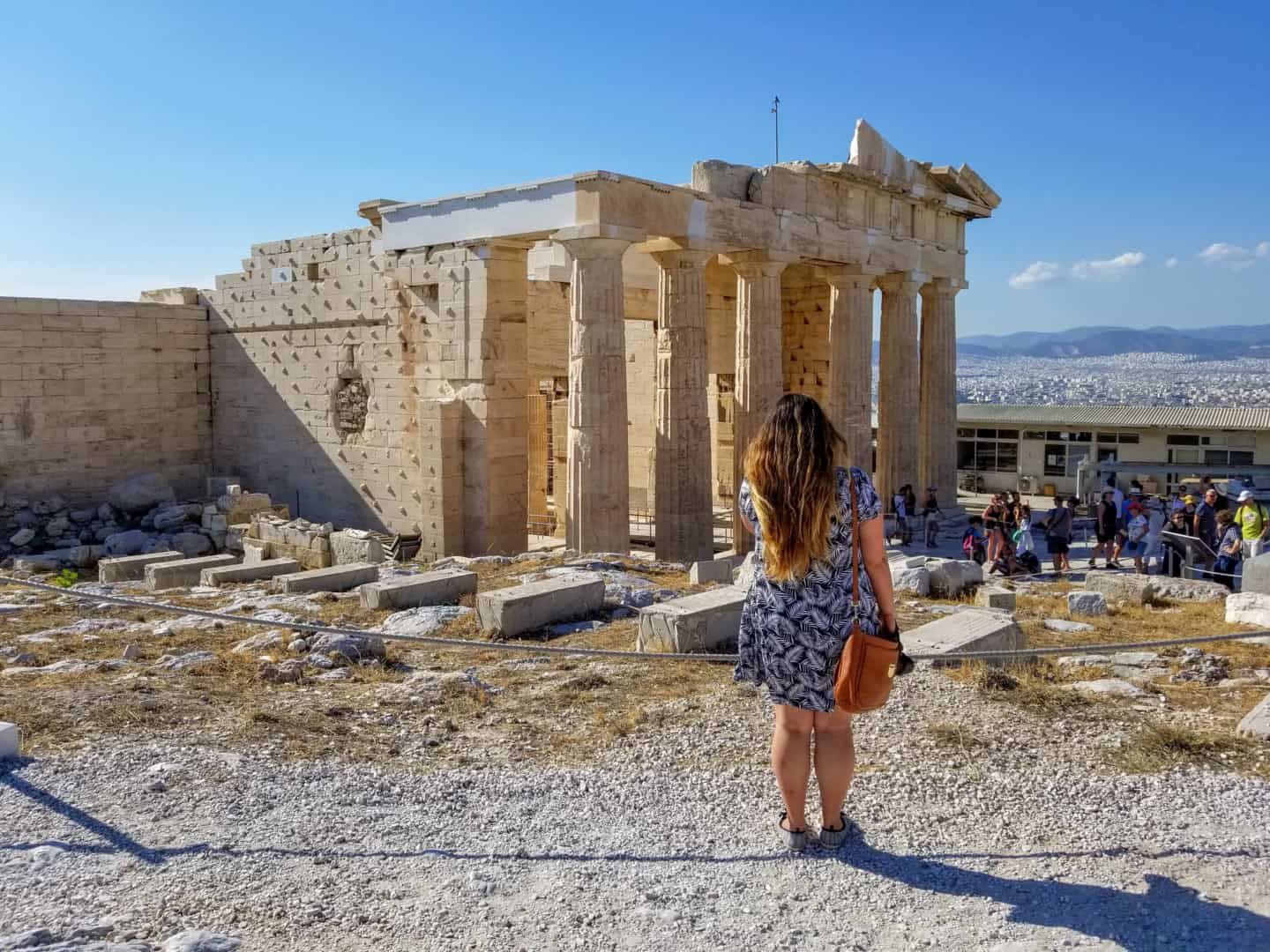
Buying Your Tickets
I would recommend against buying your tickets at the Acropolis just because of how popular it is and how big the lines are. If you’re interested in buying the combo tickets (the ones to multiple ruins), I would recommend visiting one of those sites first as we didn’t have to wait in line for any of them and you’ll be able to get your ticket from there.
You now also have the option to buy your tickets online here. The website is available in Greek and English and you can actually buy tickets to a fair amount of the ruins in Athens, Crete and Peloponnese. You can’t buy them too far ahead in advance at the moment. I’m writing this post in early February, and I was unable to buy anything past the end of March so you’ll probably only be able to buy them 1-2 months in advance. They make you select a time slot on the day you’re choosing but include this notice: “The time slot selection is collected for statistical/information purposes only; the user is under no limitation concerning the exact time of the visit” so I would just pick whichever time slot and move on! Once the tickets are in the cart you have 30 minutes to check out and looks like at the moment only VISA and Mastercard are accepted. Once the transaction is complete you’ll get the tickets emailed to yourself.
The Acropolis Museum
To note, the Acropolis Museum is not covered by the Acropolis ticket (even if you get the combo ticket). The cost for the museum is 5 euros in the off-peak season (November 1st to March 31st) and 10 euros in the peak season (between April 1st and October 31st).
The Acropolis Museum has varying hours depending on what day of the week and when in the year you’re visiting so make sure to check out their official hours here.
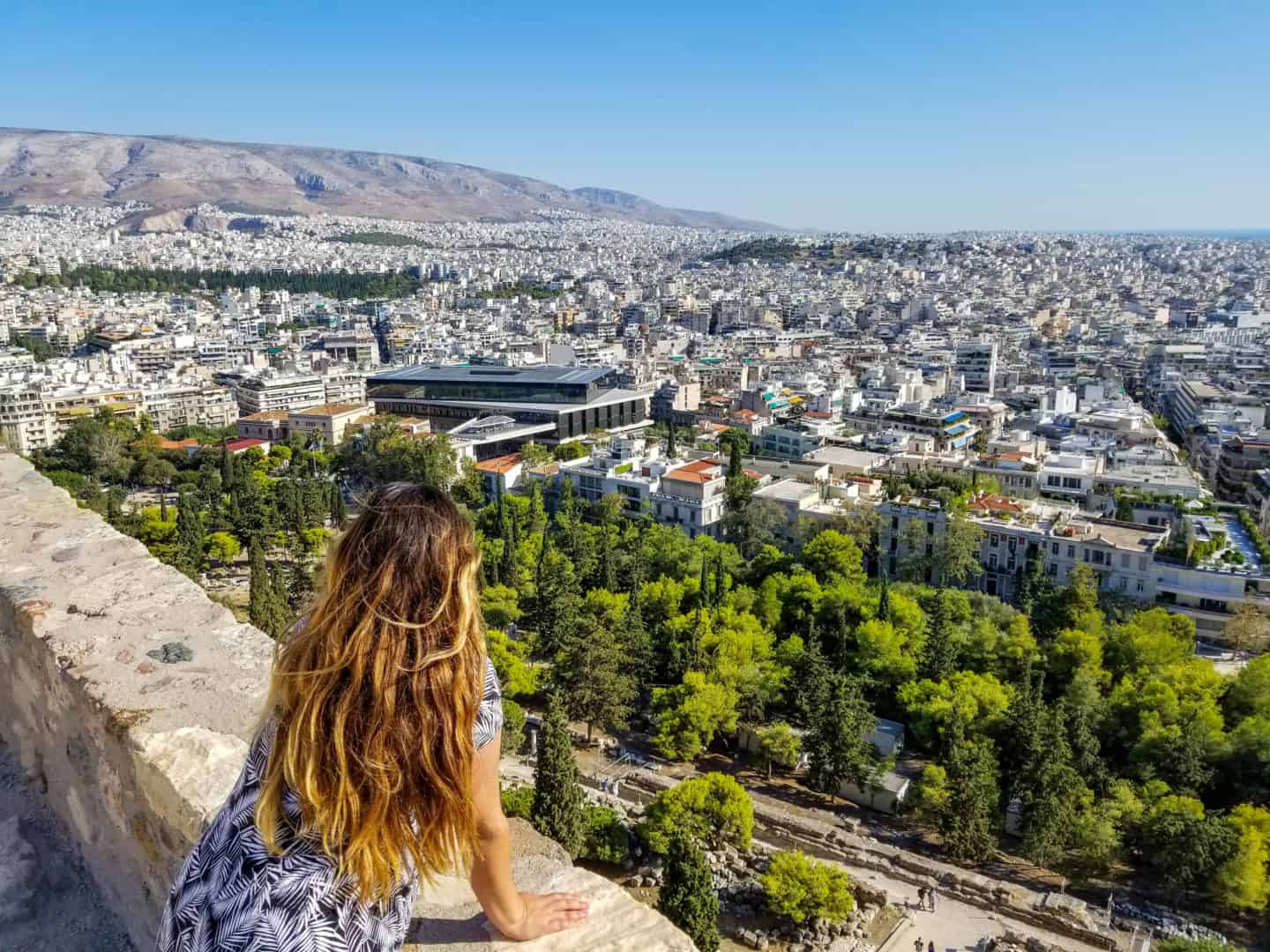
How to get to the Acropolis
There’s a couple of ways to get to the Acropolis. The main roads on the south and west are really large pedestrian streets filled with restaurants and shops so you can enjoy a nice walk up. If you’re coming from the Monastiraki plaza it’s in my opinion a bit of a more challenging walk as it is a very obvious uphill but it has the benefit of being a lot less crowded and mainly shaded. You’ll be walking through a neighborhood originally and when you get to a crossroad where there are woods instead of homes you’d follow the road to the right. Plus, the views of the Acropolis on the way up the hill are fantastic and fairly unbeatable! Whatever way you head to the Acropolis should be fine as it’s fairly hard to miss. It rises above the city so you’ll see it no matter where you come from!
If you’re staying on the outskirts of the city, the three metro stations around the Acropolis are Thesion, Monastiraki and Acropolis and you’ll be able to walk to the Acropolis from any of them.
History & Details of the Acropolis
You may be more knowledgeable about the Acropolis than I was before I went but I was under the impression that it was just one building and that’s so wrong! The Greek word Acropolis actually means a citadel or fortified part of an Ancient Greek city, typically built on a hill. So the Acropolis is actually a collection of buildings on top of the giant hill you’ll be visiting. Most cities in Ancient Greek would be built around their Acropolis which was considered the safest place in the city and would often be where citizens would flock to during war and invasion. The main buildings of the Acropolis in Athens, including the Parthenon, were built in the 5th century BC by Pericles. The ones you’ll most likely be visiting are the Odean of Herodes Atticus, Beulé Gate, the Proplyaia, the Temple of Athena Nike, the Theater of Dionysus, the Erectheion and and the Parthenon.
Odean of Herodes Atticus
Before walking into the Acropolis area you’ll see the Odeon of Herodes Atticus. It’s situated below the Acropolis complex (and on the right hand side if you’re coming from the ticket booth). The Odean of Herodes Atticus is an ancient theater that’s named after Herodes Atticus and was built in 161 AD. Interestingly this theater is still in use today for plays and concerts so you could get a real feel for what it was like in Ancient Greece if you visit while an event is on! The theater is built with semicircular rows that can fit about 5000 people that would all be looking down towards the circular space in the center where the performance/band would be performing.
Beulé Gate
Once you’ve paid your tickets and entered the complex, you’ll be going up through the Beulé Gate which is named so because of the French archaeologist who discovered it. The gate’s been around since 280 BC and features a wide marble staircase that you walk up to. Depending on when you’re visiting you can usually see people sketching on their notepads here!
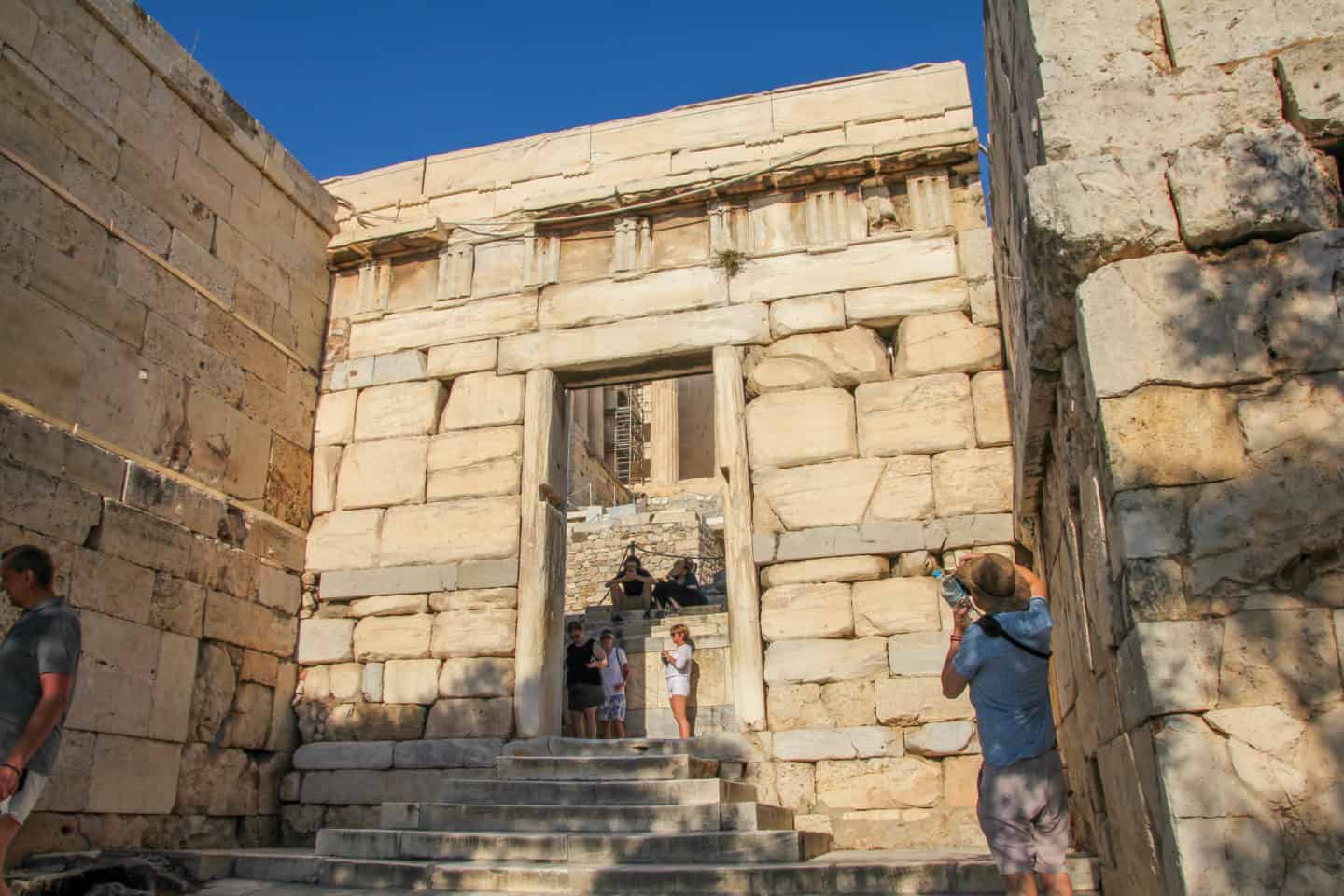
Propylaia
The Propylaia (meaning gates) of the Acropolis were built to be super impressive which were meant to prepare visitors for the grandness of the Acropolis itself. They also became a gateway for checking who was visiting the Acropolis. The gate is a series of giant columns and they’re quite impressive to walk through!
Temple of Athena Nike
The Temple of Athena Nike was restored in the 19th and 20th centuries so it’s one of the most well-preserved of the Acropolis buildings. It’s raised and stands on a piece of rock. The temple is dedicated to the Goddess Athena and her victory (which is what the word Nike means!). The temple was built around 430 BC after the Parthenon and the Propylaia were both built. The temple has two sets of four columns at both the north and south ends of the temple.
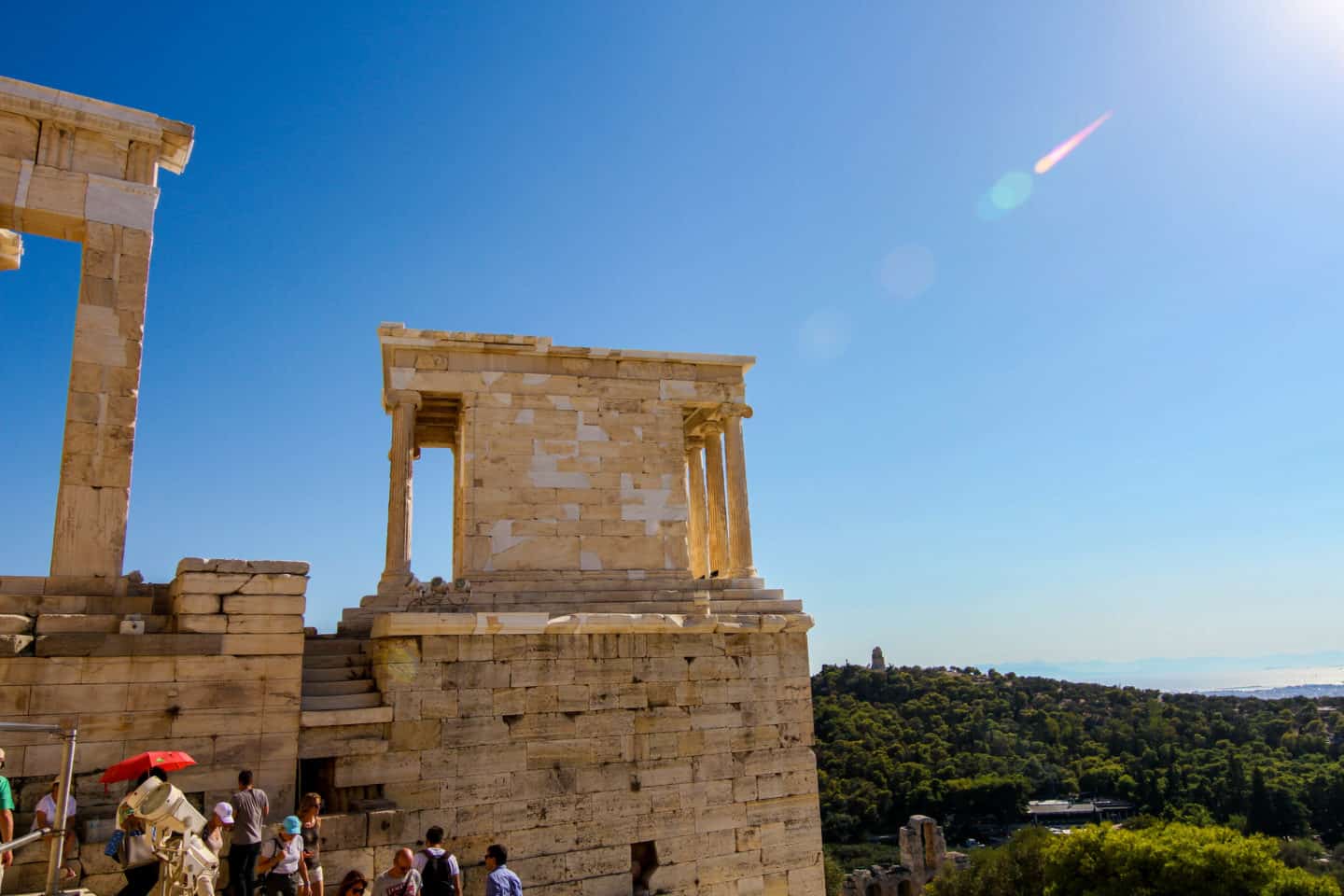
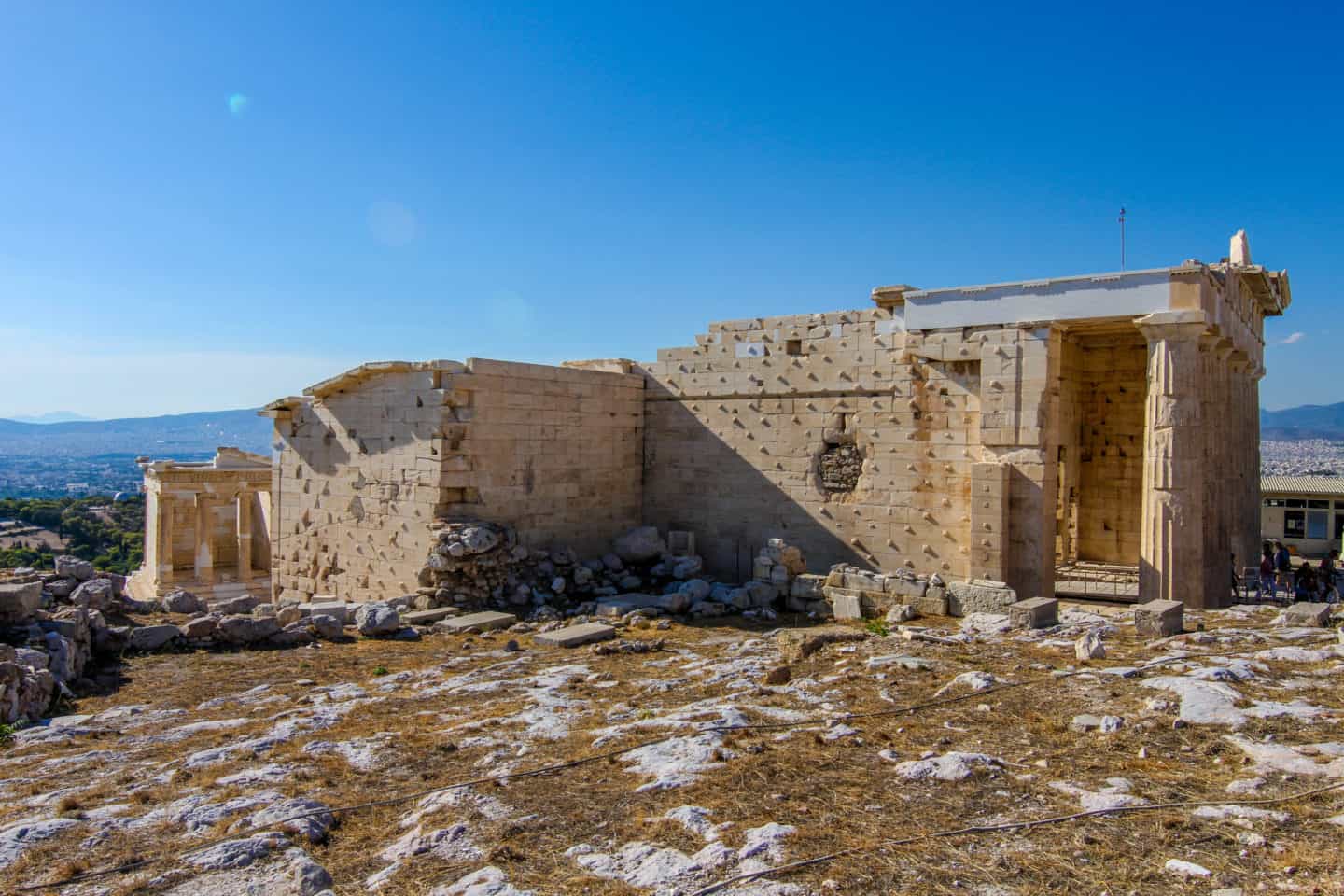
Old Temple of Athena Polias
The Old Temple of Athena was found between the Erechtheion and the Parthenon. It was built in the 600 BC but was destroyed in 480 BC. The temple is pretty much gone but the foundations of it were discovered by archaeologists in the 19th century.
Theater of Dionysus
Below the Acropolis, and near the Acropolis Museum, you’ll find the Theater of Dionysus. You can buy a separate entrance ticket to just the theater if you want to but it is part of your Acropolis ticket if you’re willing to make the trek down.
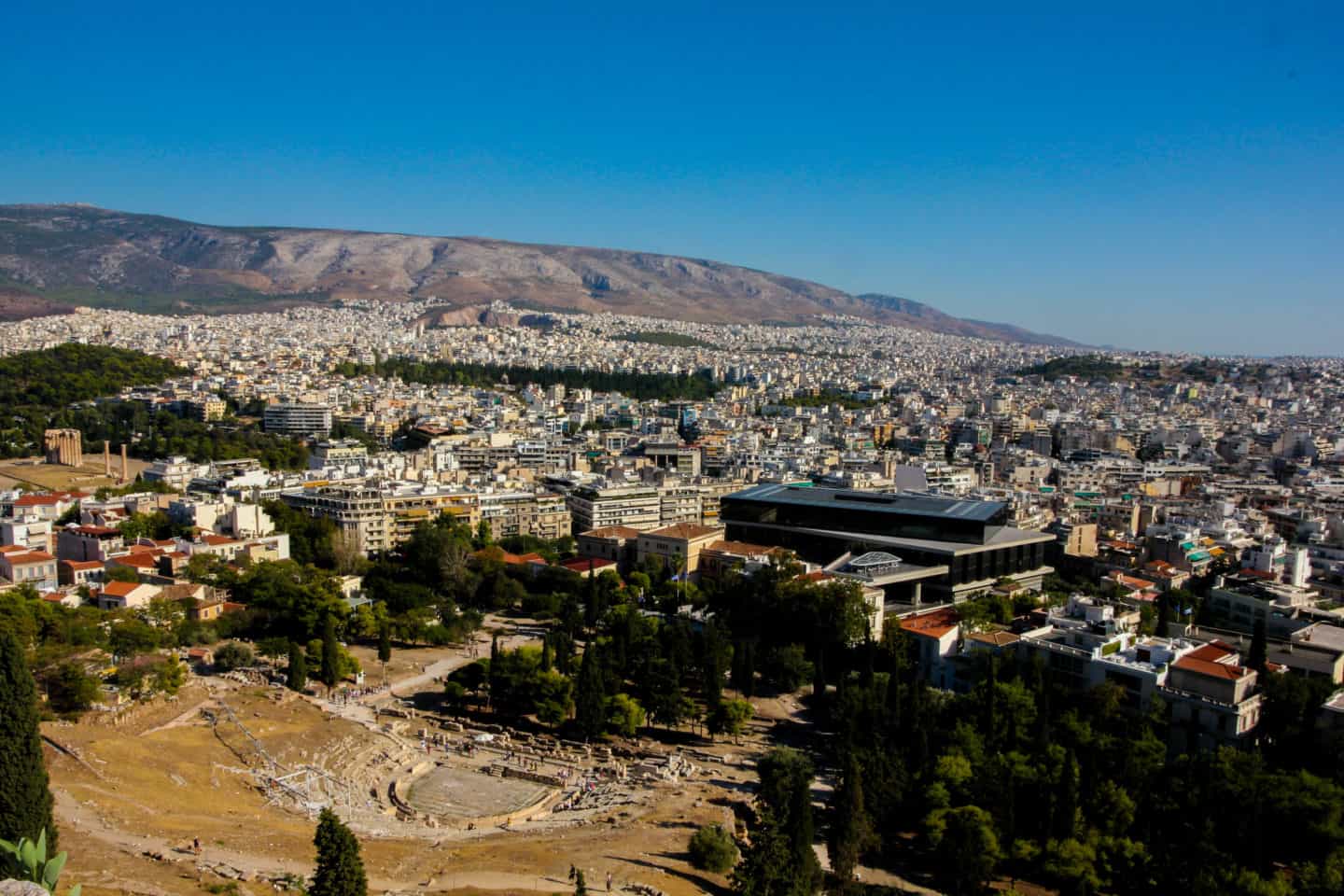
The Erechtheion
The Erecthion is the site where Poseidon and Athena battled over who would be the patron of Athens which Athena won and hence the city was named after her. It’s the religious temple of the Acropolis and one of the most famous portions of it is the Porch of the Caryatids at the Erechtheion.
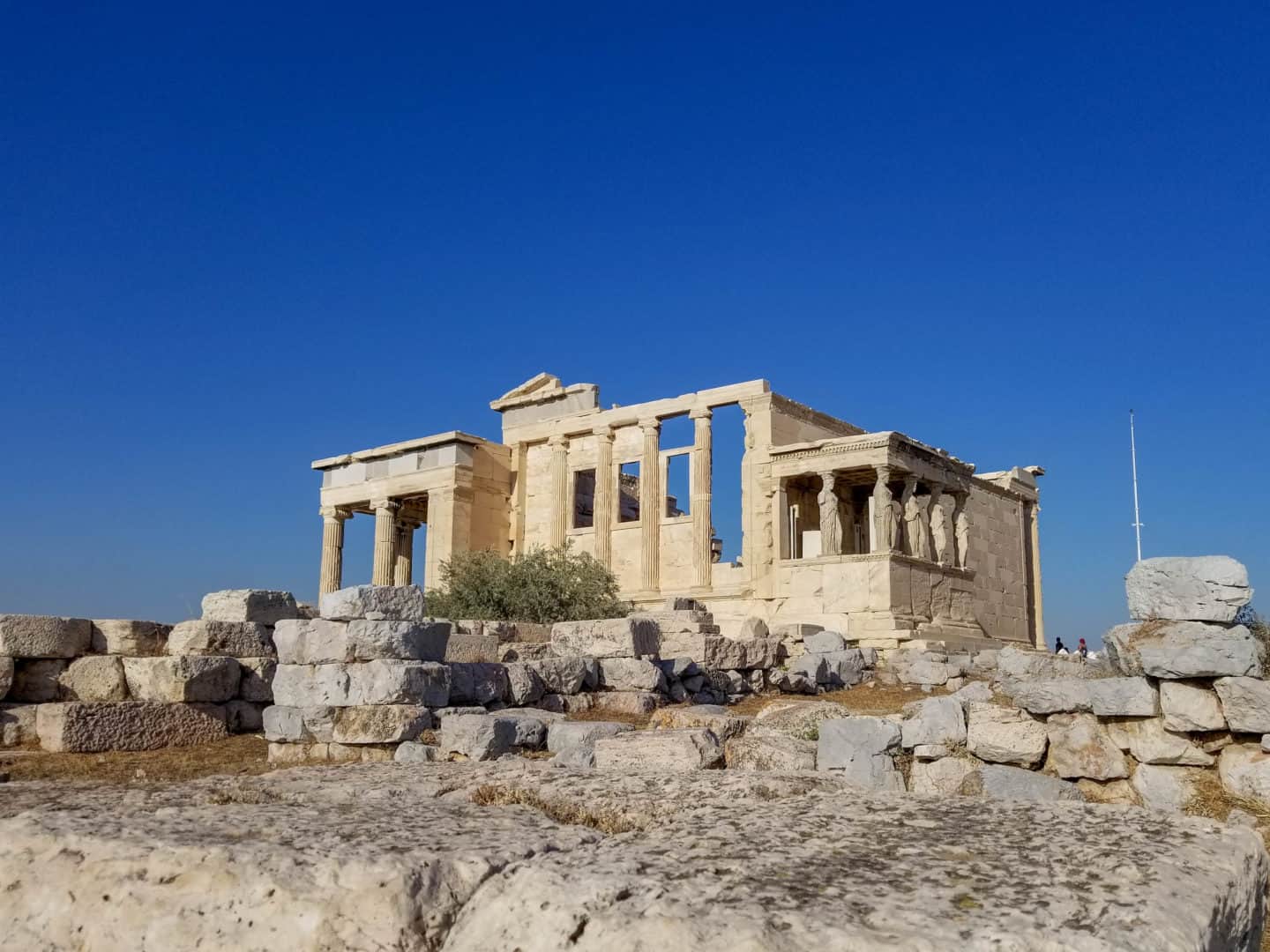
Porch of the Caryatids at the Erechtheion
One of the most well known features of the Erechtheion is the Porch of the Caryatids. It’s also sometimes referred to as a balcony. It’s a set of six columns that have been sculpted into maidens instead of regular columns. Kekrops, an Athenian royal, was buried under the porch too.
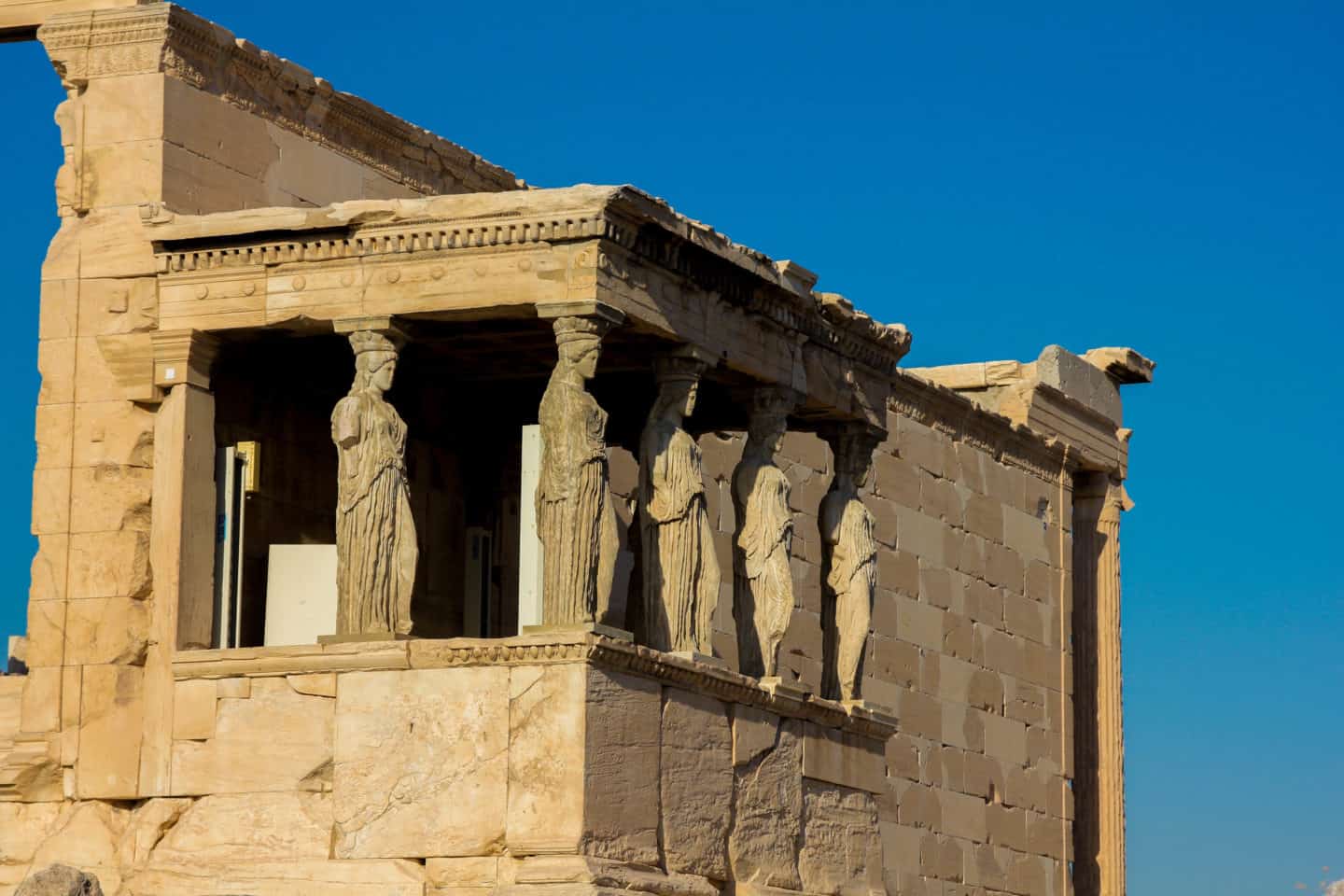
The Parthenon
The Parthenon is most likely what you picture as the Acropolis before you visit (at least it was for me!). The Parthenon is called a temple but wasn’t actually a place of worship. It’s actually a tribute commemorating the Greek victories over the Persians and was a treasury for tributes paid by other Greek cities towards Athens. The temple is dedicated to Athena Parthenos (hence the name) who was the patron of Athens and was built between 447 BC and 338 BC. While it wasn’t originally a place of worship, it did serve as both a church and a mosque during various periods where Athens was conquered. The temple has 8 rows of 17 columns for a total of 136 columns and while you can’t walk inside the temple and between the columns, you can walk around the exterior of it and admire all the different angles! The temple survived for 2100 years before it was bombed in the 17th century during a fight between the Turks and the Venetians. But the ruins are fairly well preserved and you can certainly picture the glory of the temple while you visit!
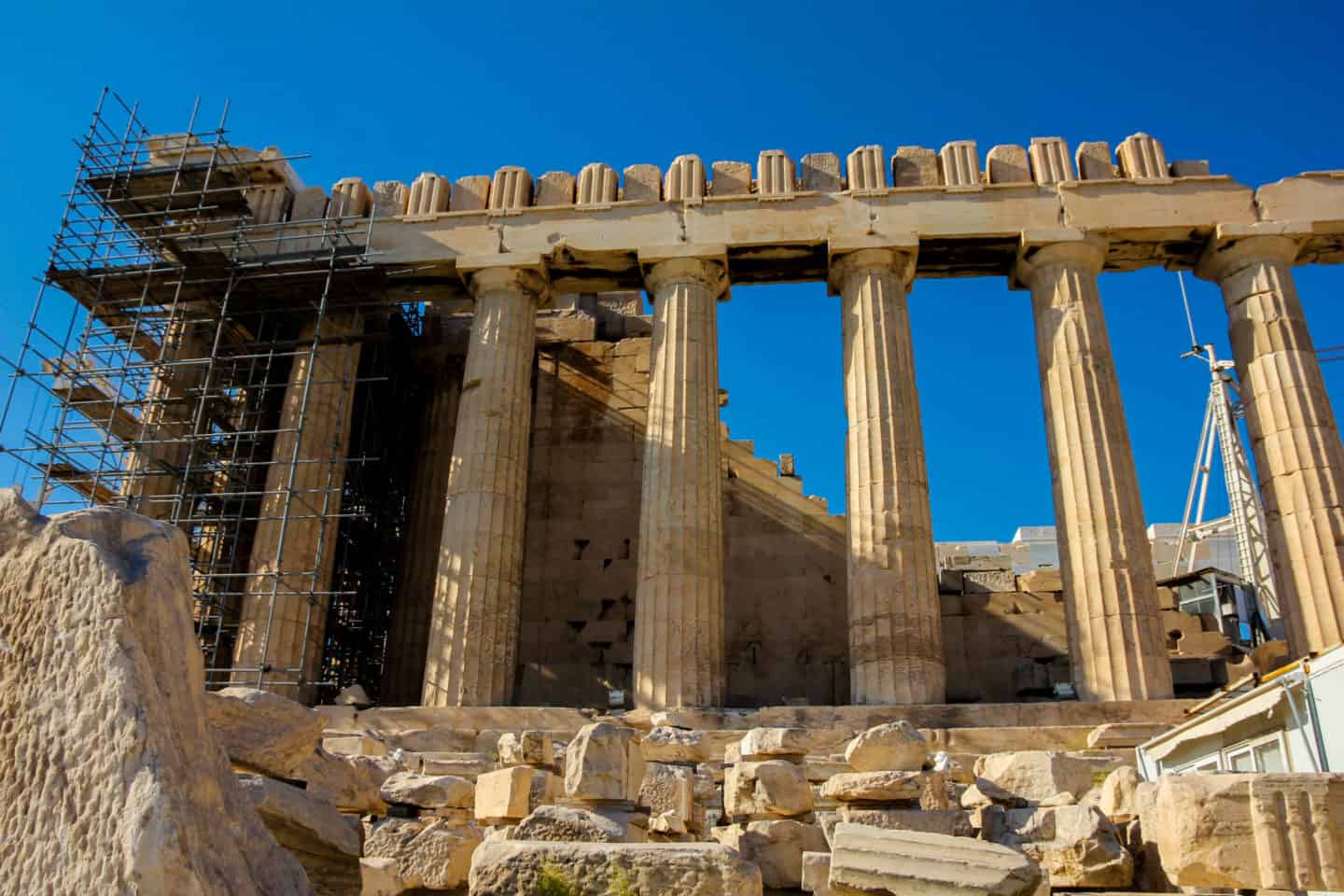
Tips for Visiting the Acropolis
If mobility is an issue or if you’re in a wheelchair there is actually an elevator on the northwest of the Acropolis. When you purchase your tickets they can tell you where to go but it’s recommended that you call ahead (+30 210 9238747 or +30 210 3214172 as per the Ministry’s website) to make sure the elevator is working. Your hotel should be able to place the call for you if you can’t do so yourself. Obviously, the elevator is meant to help those who actually need it so please be mindful of this!
Athens is a major stop during most Mediterranean cruises and lots of people chose to visit the Acropolis during their one day in Athens. Most cruise ships arrive early so if you’re looking to avoid the crowds either be at the entrance right at 8 am when they open or come later in the day (like after 3 pm). The benefits in either is obviously missing the crowds but it’ll also be a little bit less hot! We got there around 2 pm and it was still both fairly hot and crowded!
Bring water! There is a small stand right by the ticketing office that sells water but it’s of course at an inflated price (I think a regular 500 mL bottle was 2.50 euros when we went) and there’s lots of stairs etc. at the Acropolis and it’s fairly hot so you’ll be thankful for the water!
Make sure to wear non-slip shoes as the stones and rocks are slippery from being worn down and make sure to wear comfortable clothing as it can get incredibly hot once you’re up at the hill. Layers is also a great suggestion! I would avoid using a hat if you don’t absolutely need it. It gets quite windy at the Acropolis and as you can see from the below picture, holding on to your hat is not a guarantee!
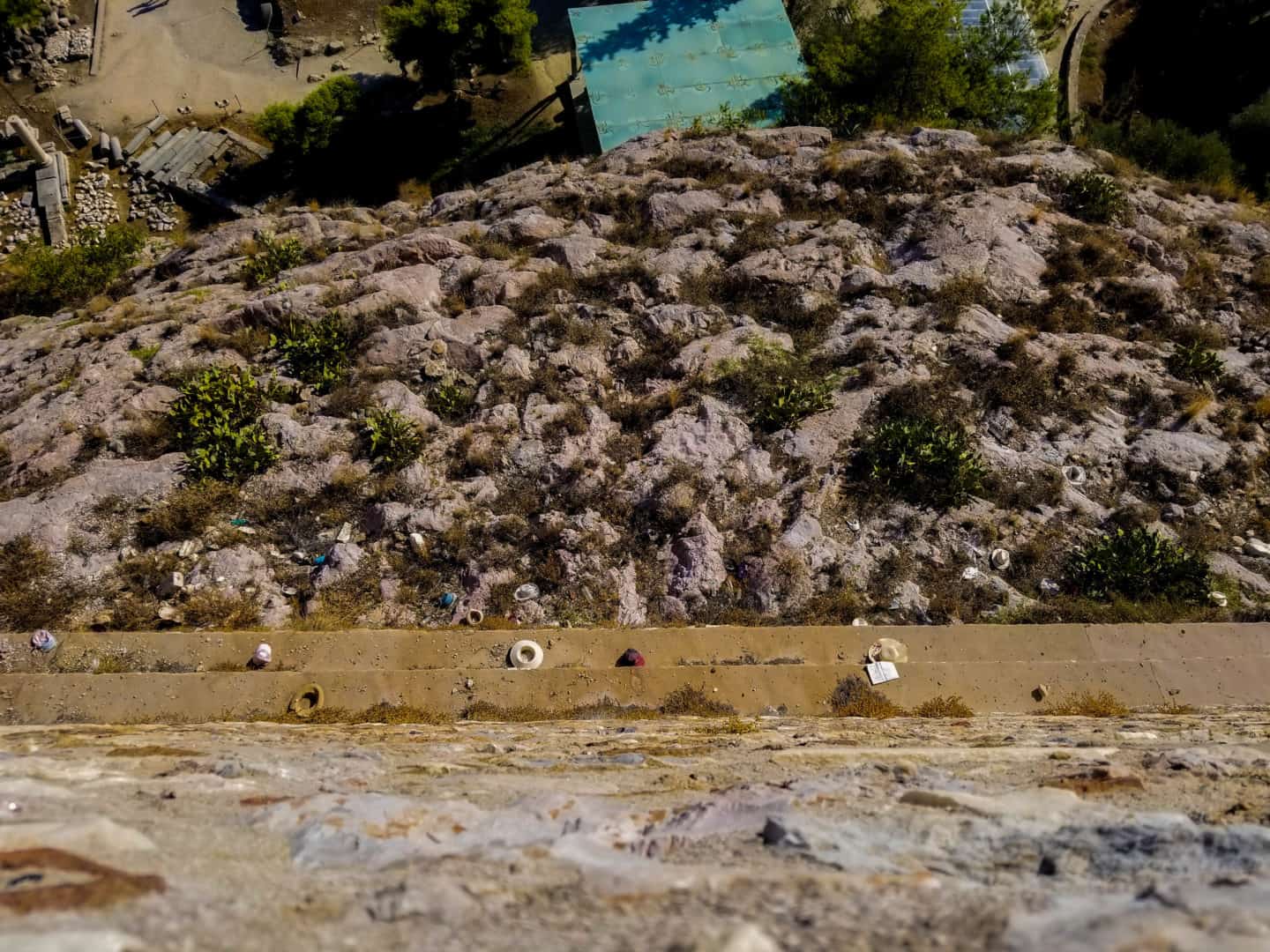
Make sure to head to the northeast corner where you see a big Greek flag. It’s a bit of an elevated platform where you’ll have great views of Athens! You’ll see straight into neighborhoods with white houses and ceramic tiled roofs and it makes for some pretty great photography. If the Acropolis isn’t your first stop then you’ll probably also recognize a number of sites like the Temple of Olympian Zeus, the National Gardens, Mount Lycabettos and so much more. The platform is also great for looking back at the buildings of the Acropolis but depending on where the sun is, the pictures themselves probably won’t be too good!
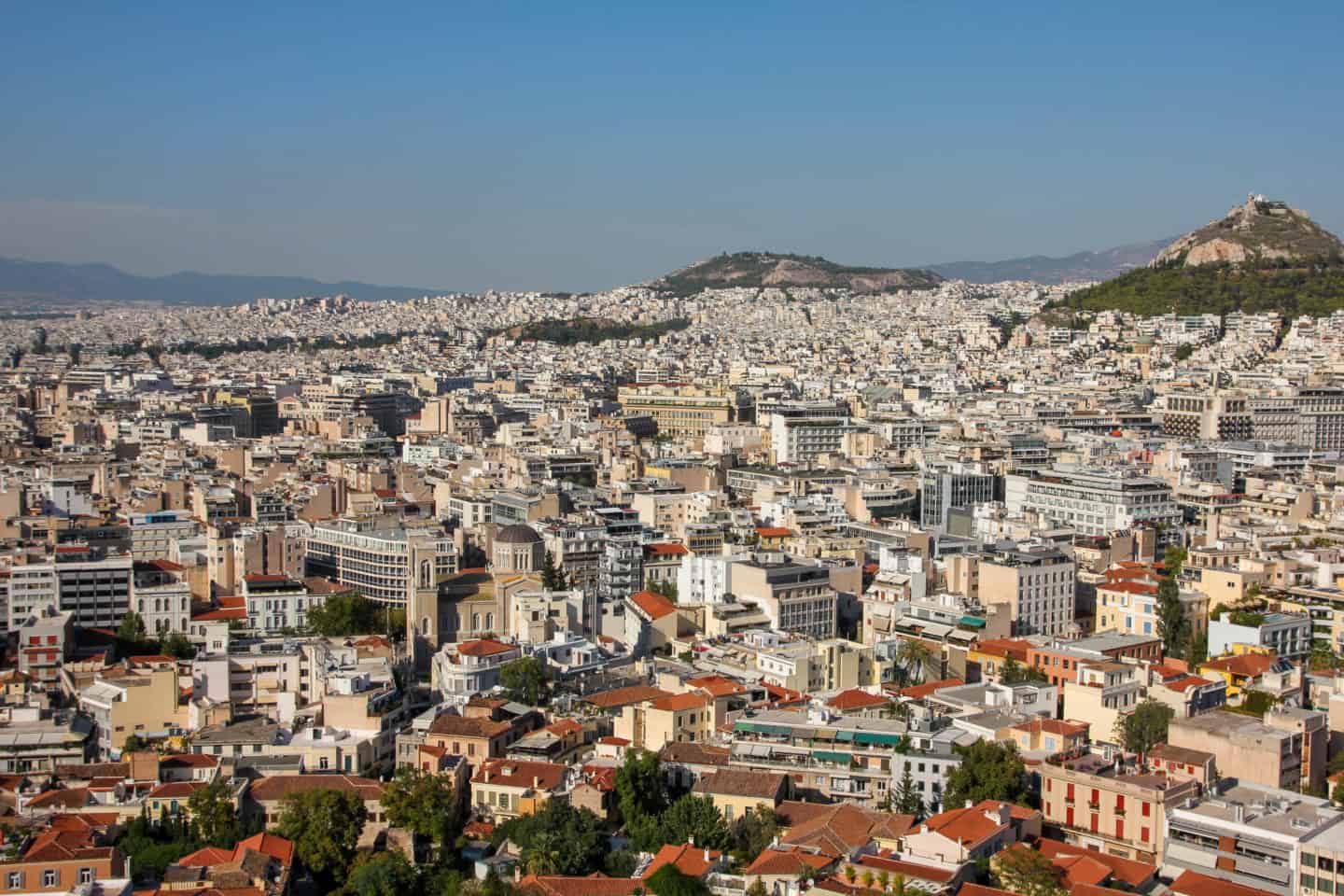
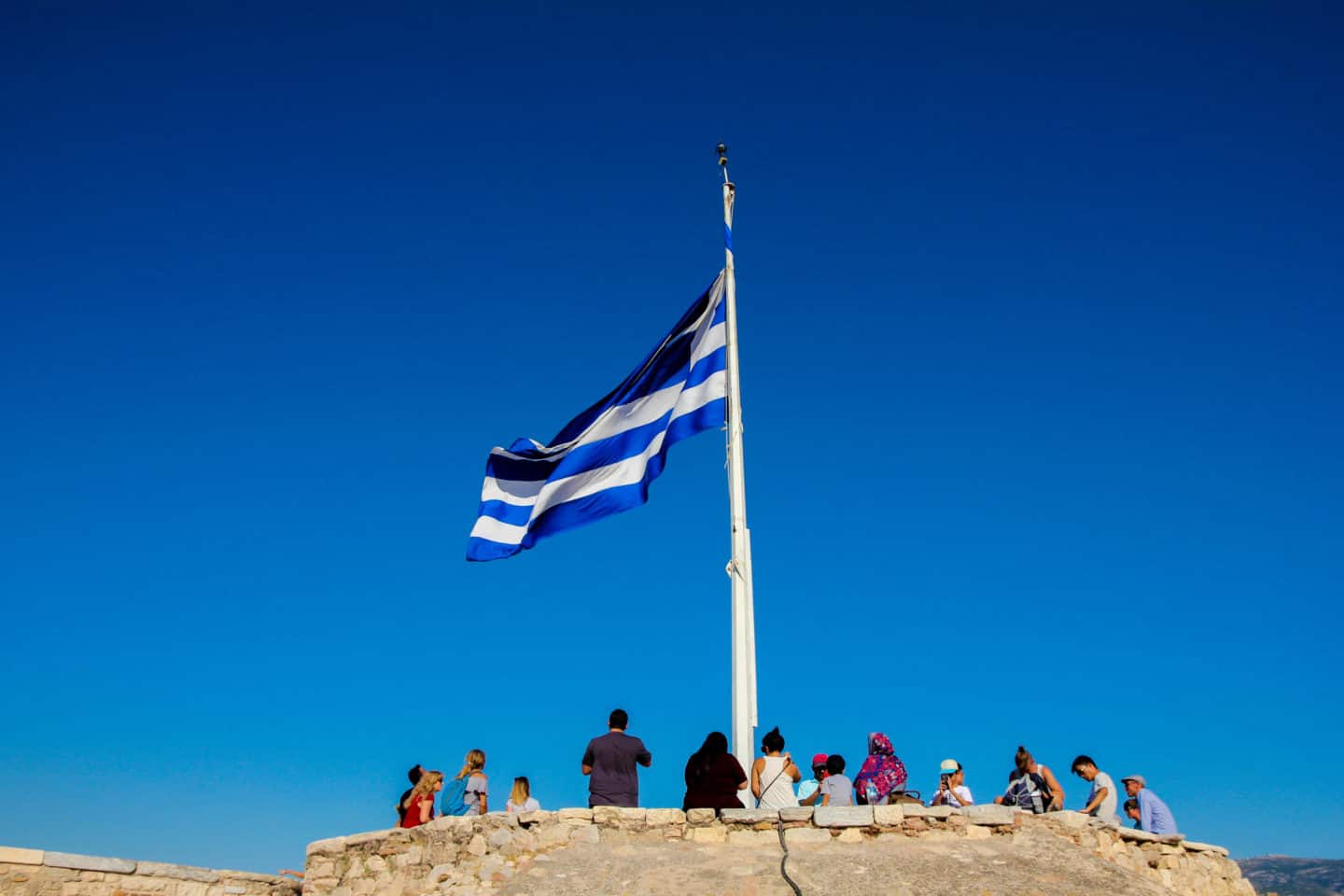
Once you’re done exploring the Acropolis (or before you enter it!) make sure to check out the little hill just down the way from the ticket booth. It’s got a little hill you can climb (with a staircase) that’ll provide you some fantastic views of the Acropolis! It’s a great view to appreciate either what you’ve just seen or what you’re about to see!
The Acropolis Museum
The Acropolis Museum is located right next to the Acropolis and if you’re into museums it’s definitely one to see! It’s air-conditioned, giant (14,000 square feet) and very modern. There’s a cafe with a patio that has a great view of the Parthenon and the museum showcases a number of pieces that have been taken straight from the Acropolis. It’s an excellent place to learn more about the history and purpose of the Acropolis and one to consider if you’re interested! We ultimately opted against the Museum because we probably would have used half a day on it alone and we just didn’t have enough time in Athens for me to make the museum a priority! I think in order to maximize your experience perhaps the museum would add to it but for me visiting the Acropolis and reading the signs was a more than adequate visit and I still super enjoyed my time!
Have you visited the Acropolis? Is it on your bucket list? Let me know in the comments and as always, pin this post for your own upcoming visit!
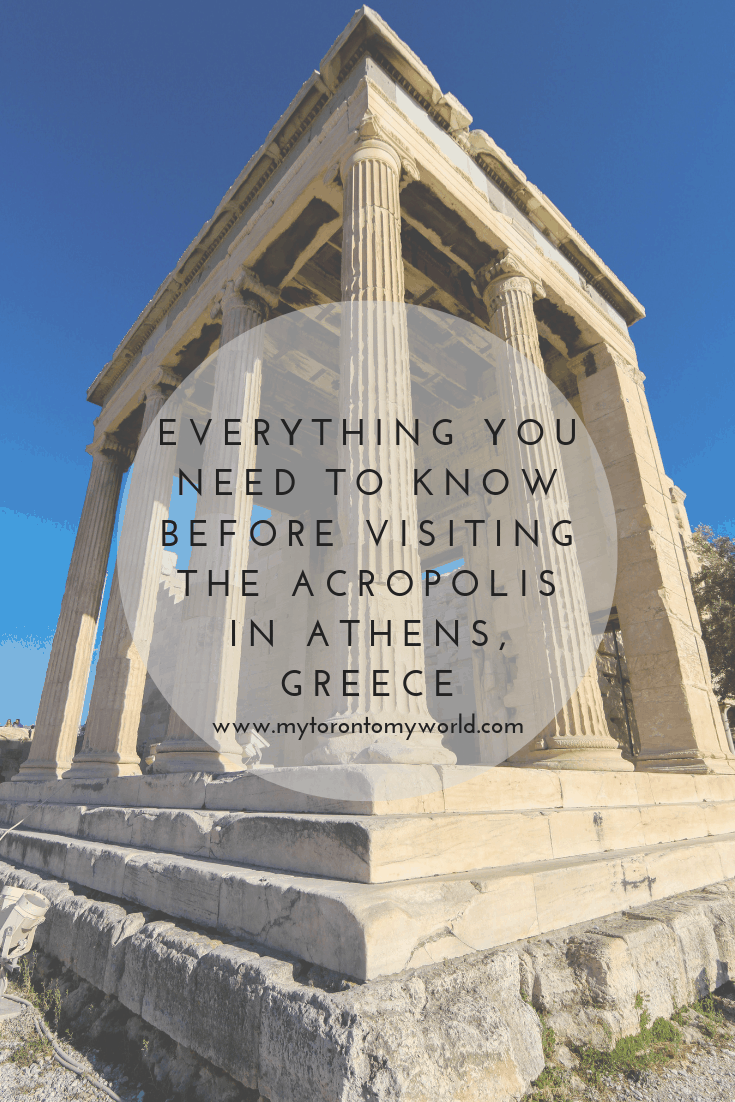 |
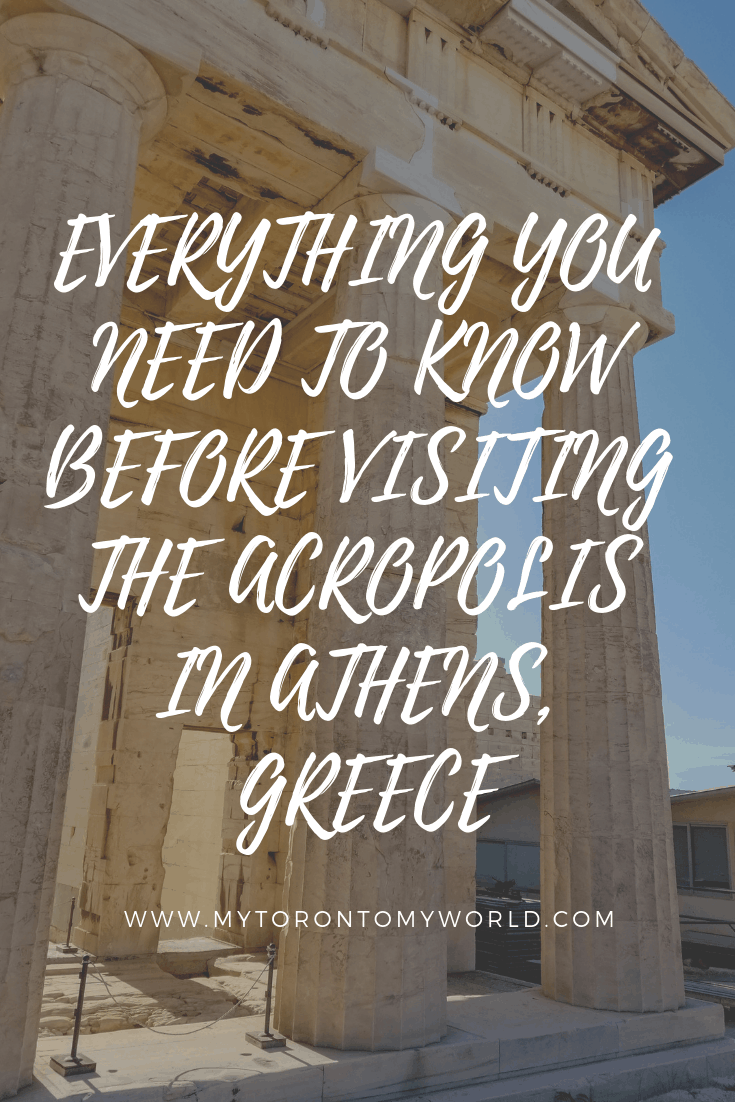 |
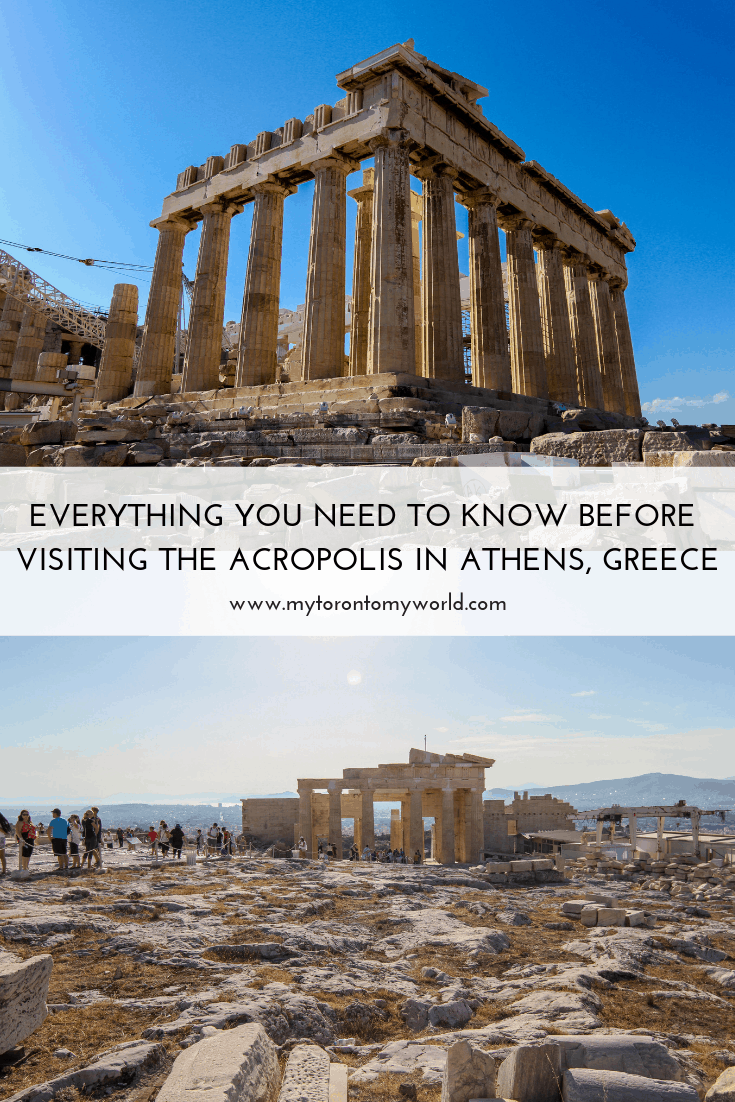 |
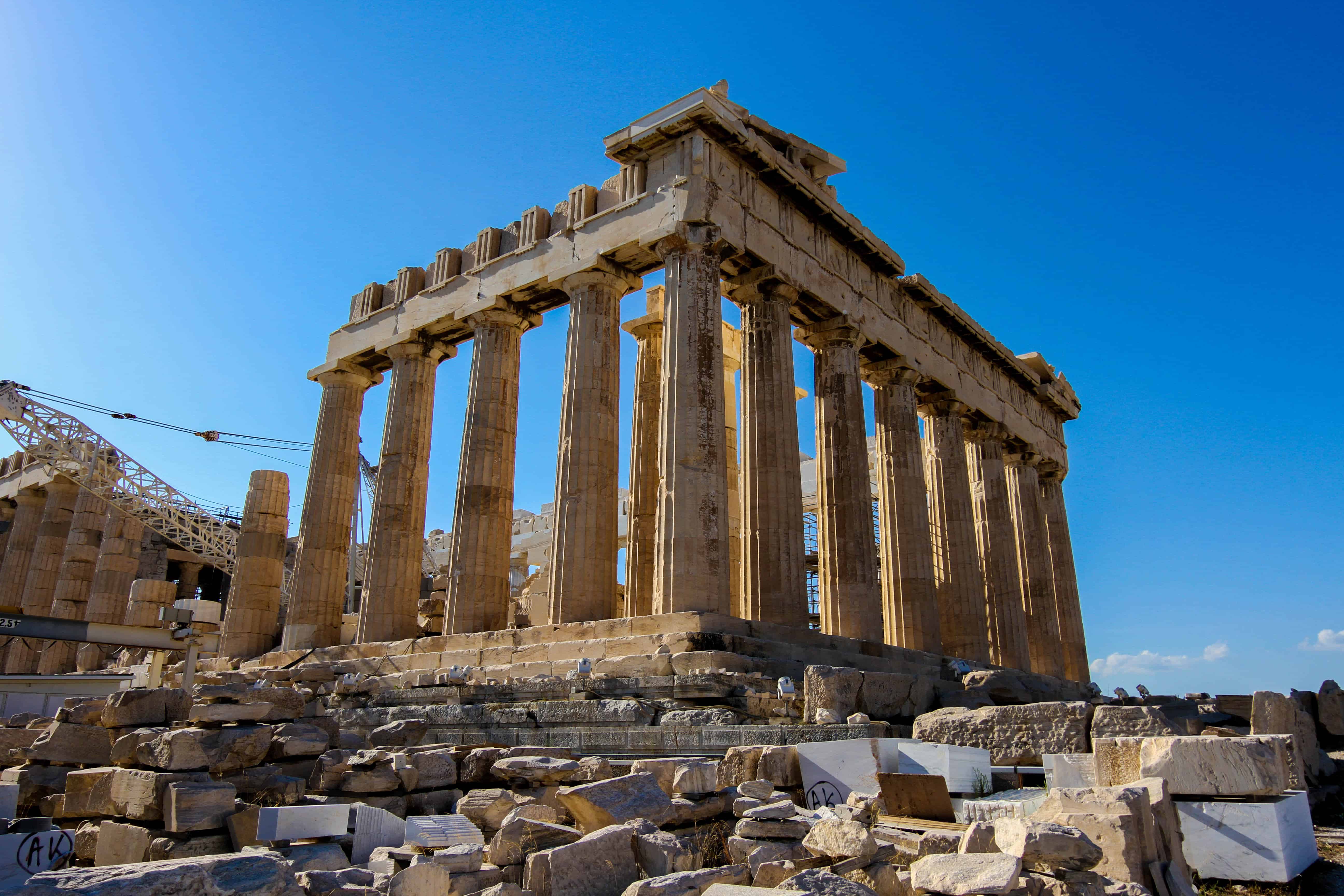
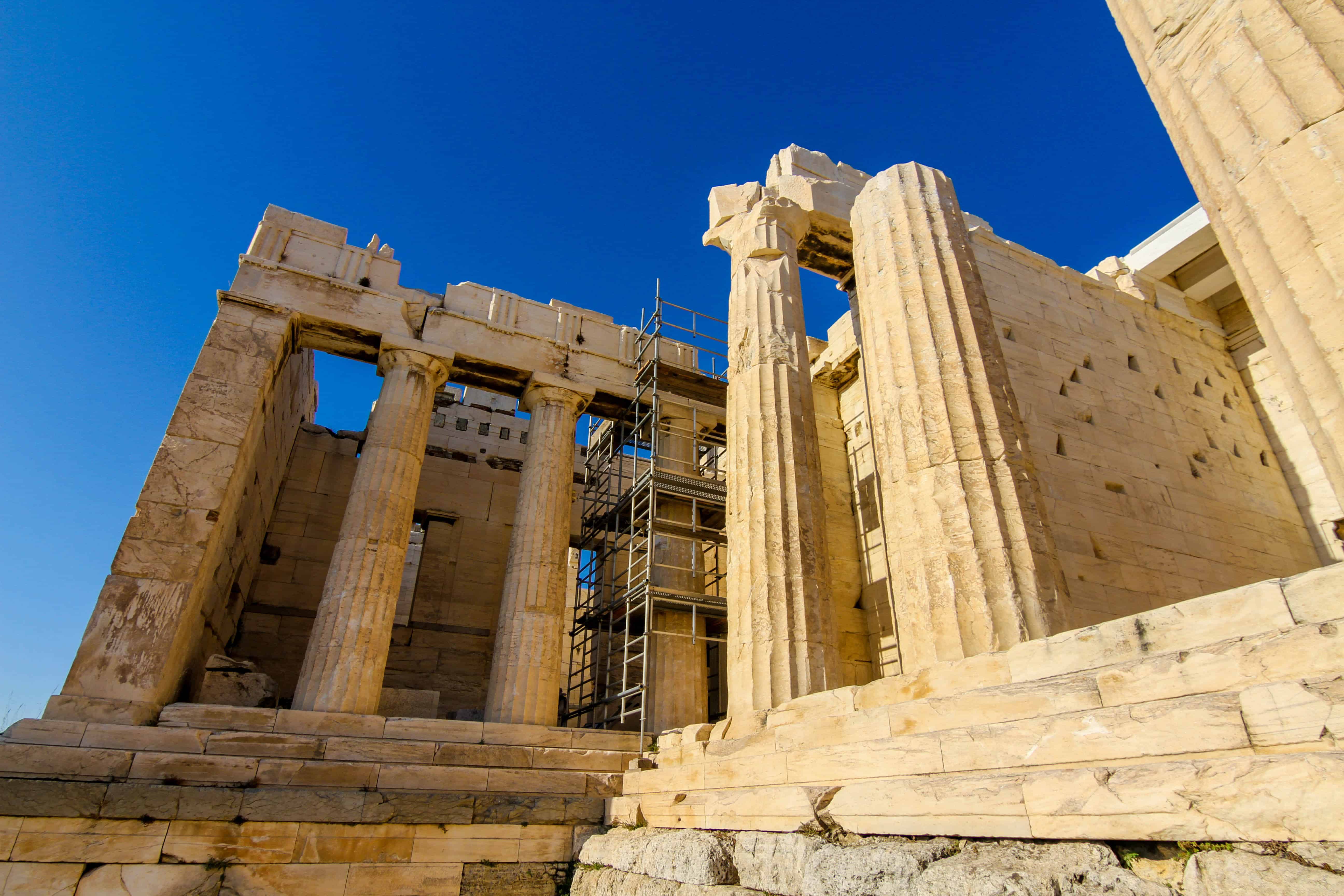
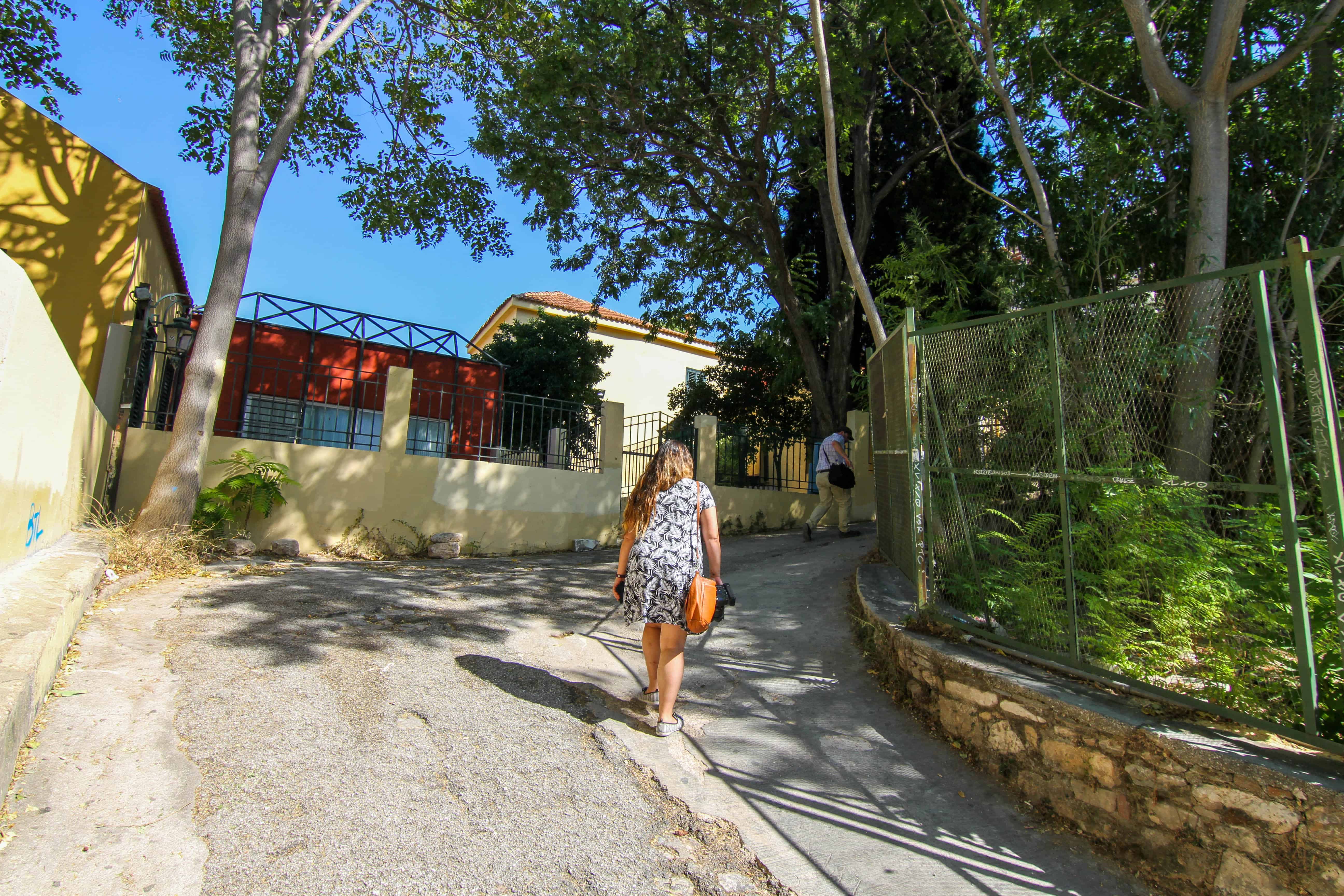
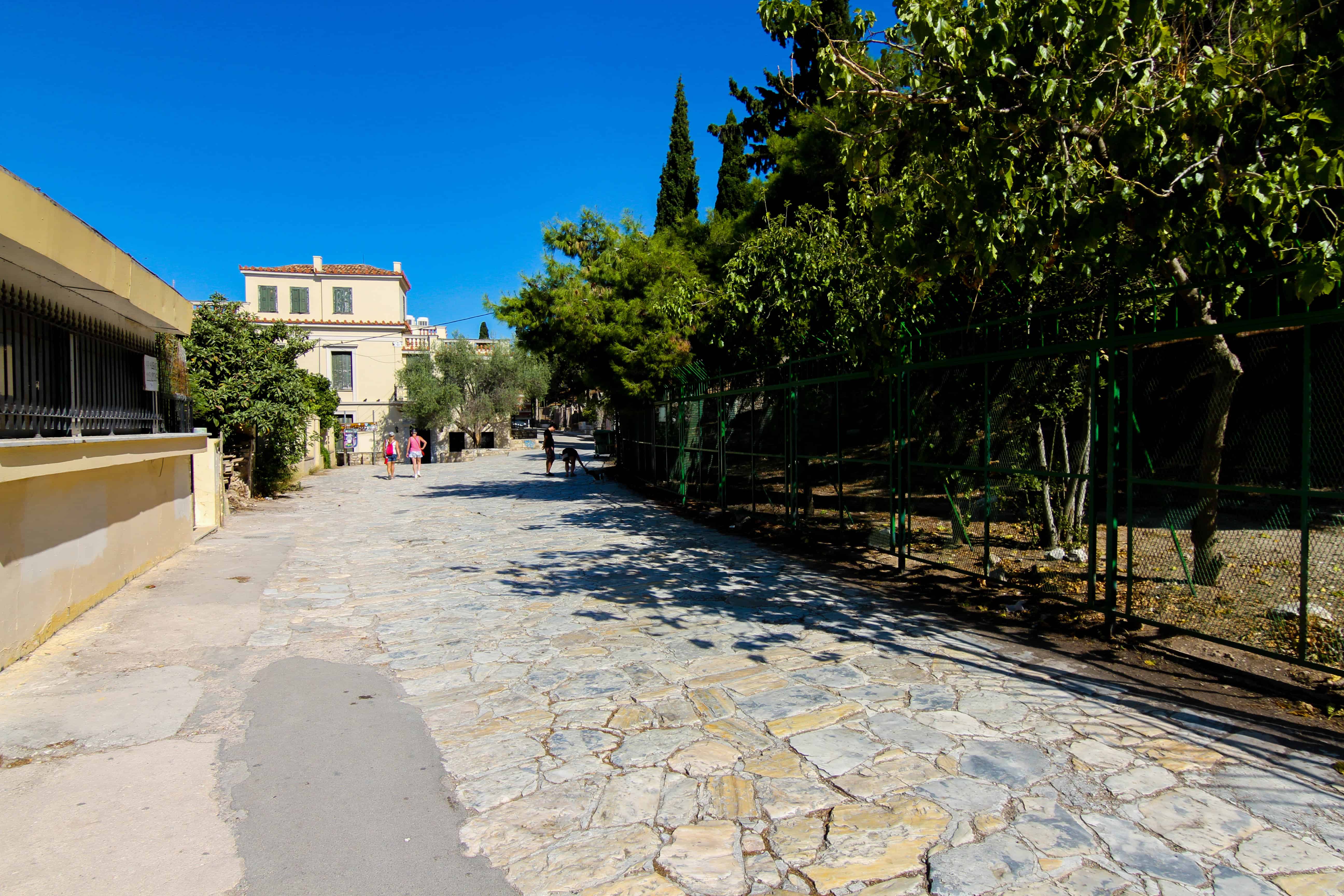
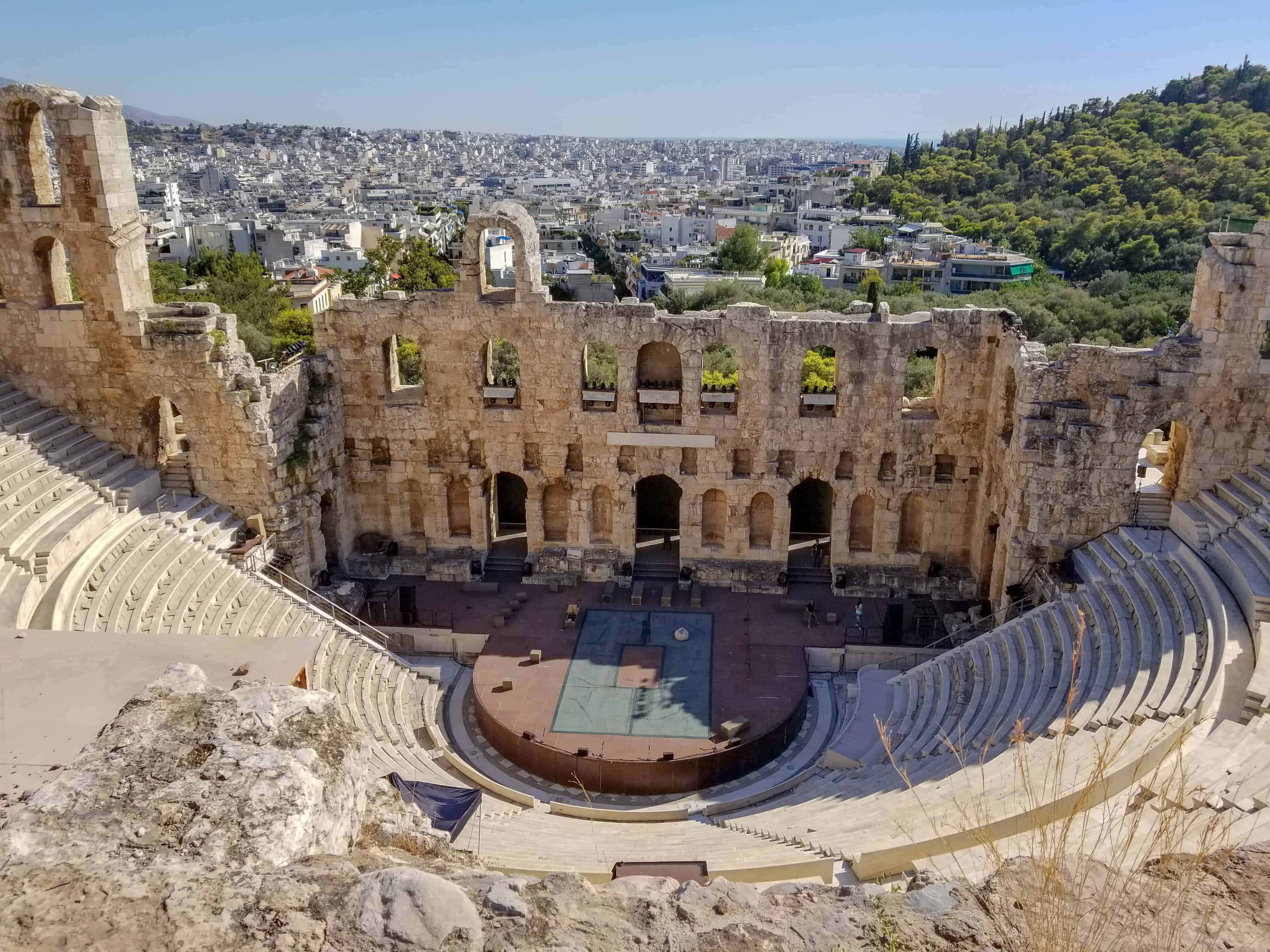
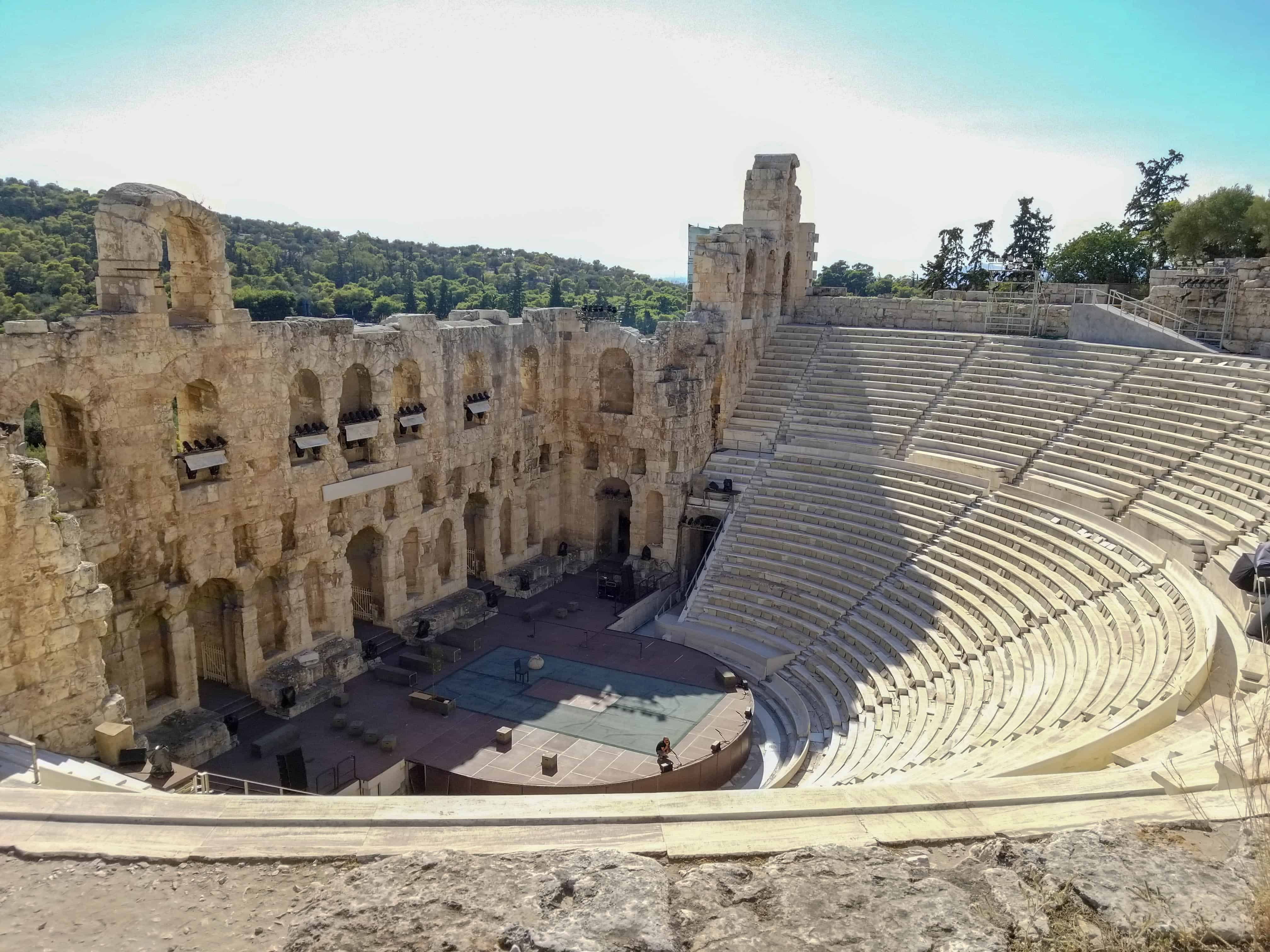
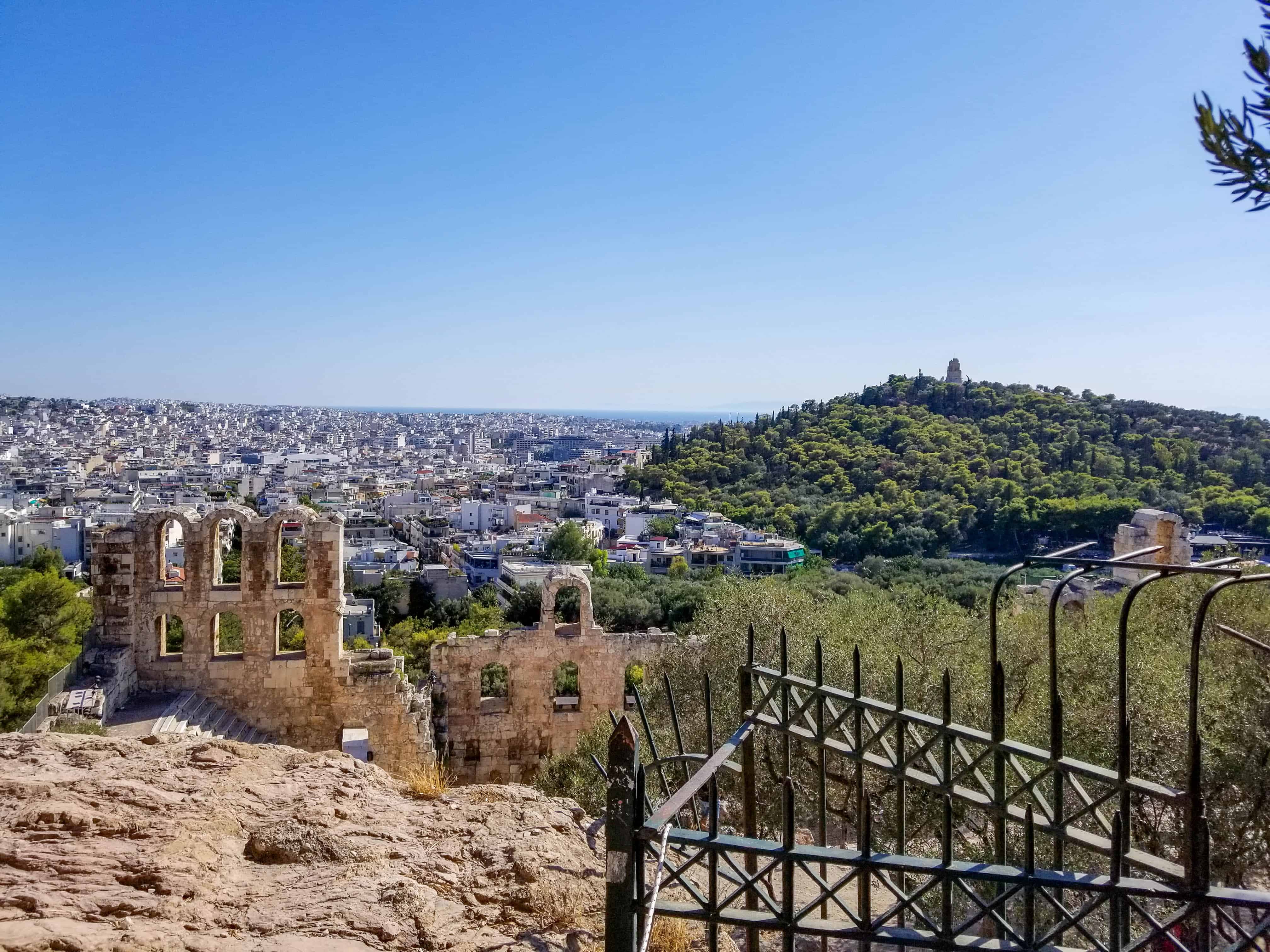
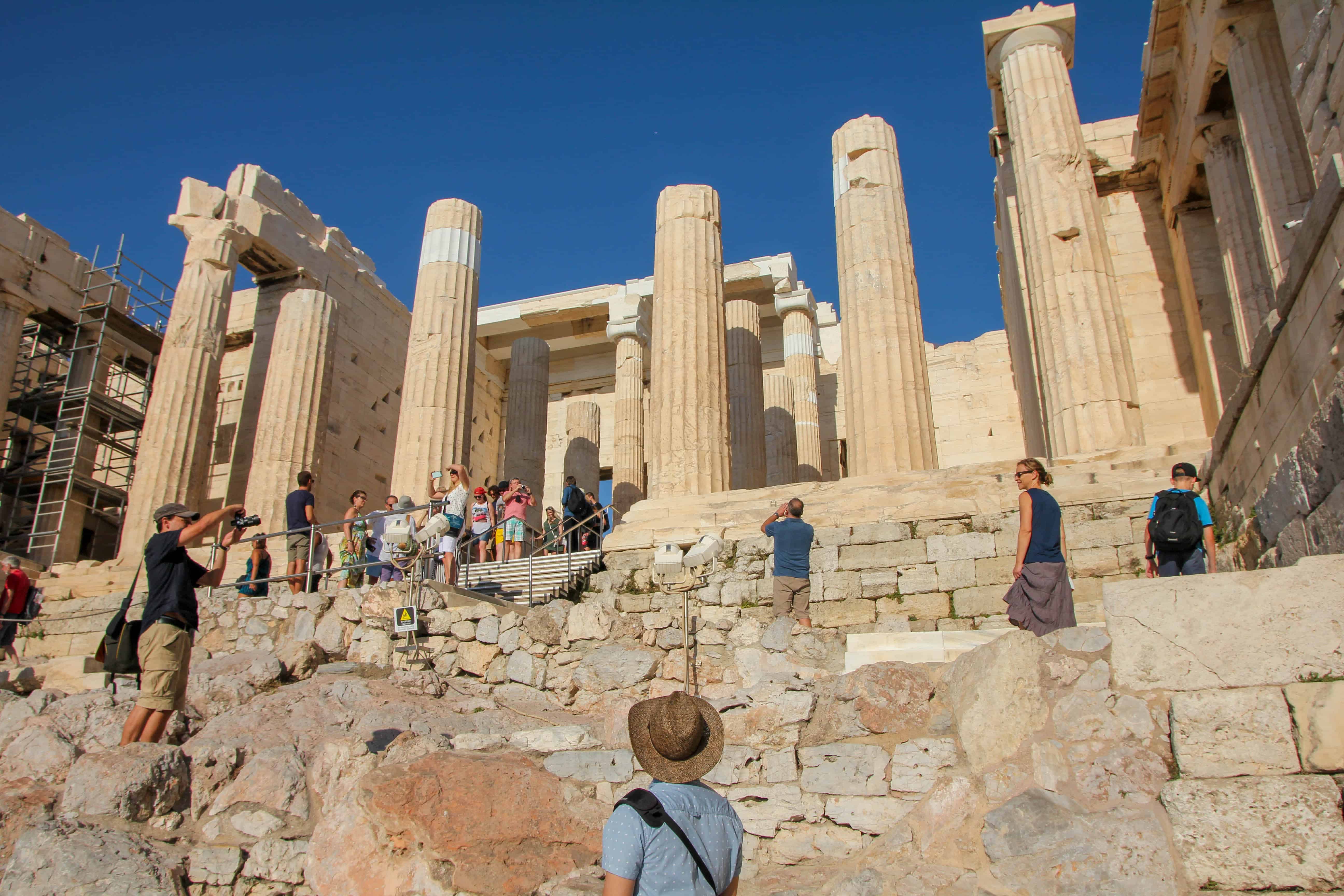

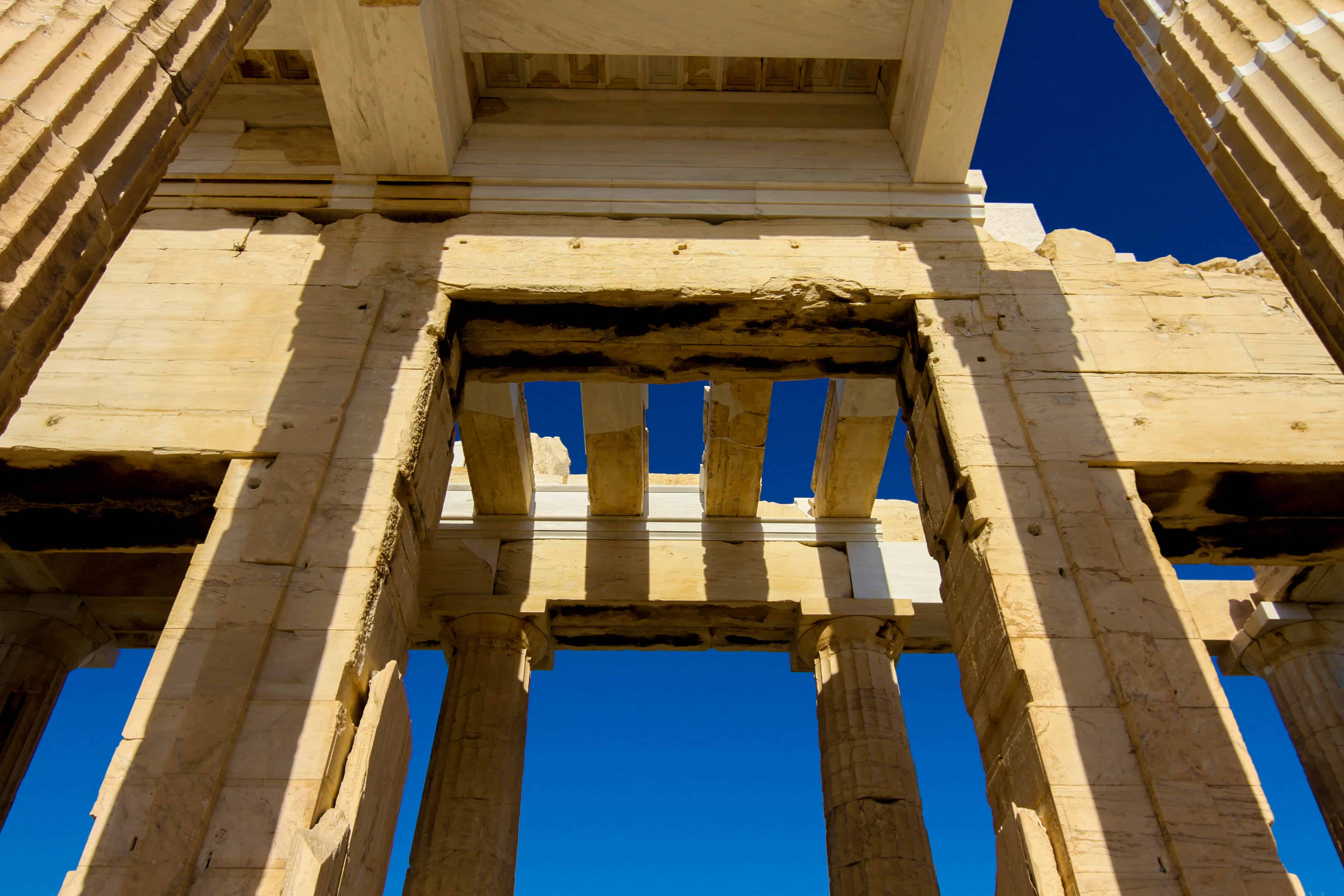
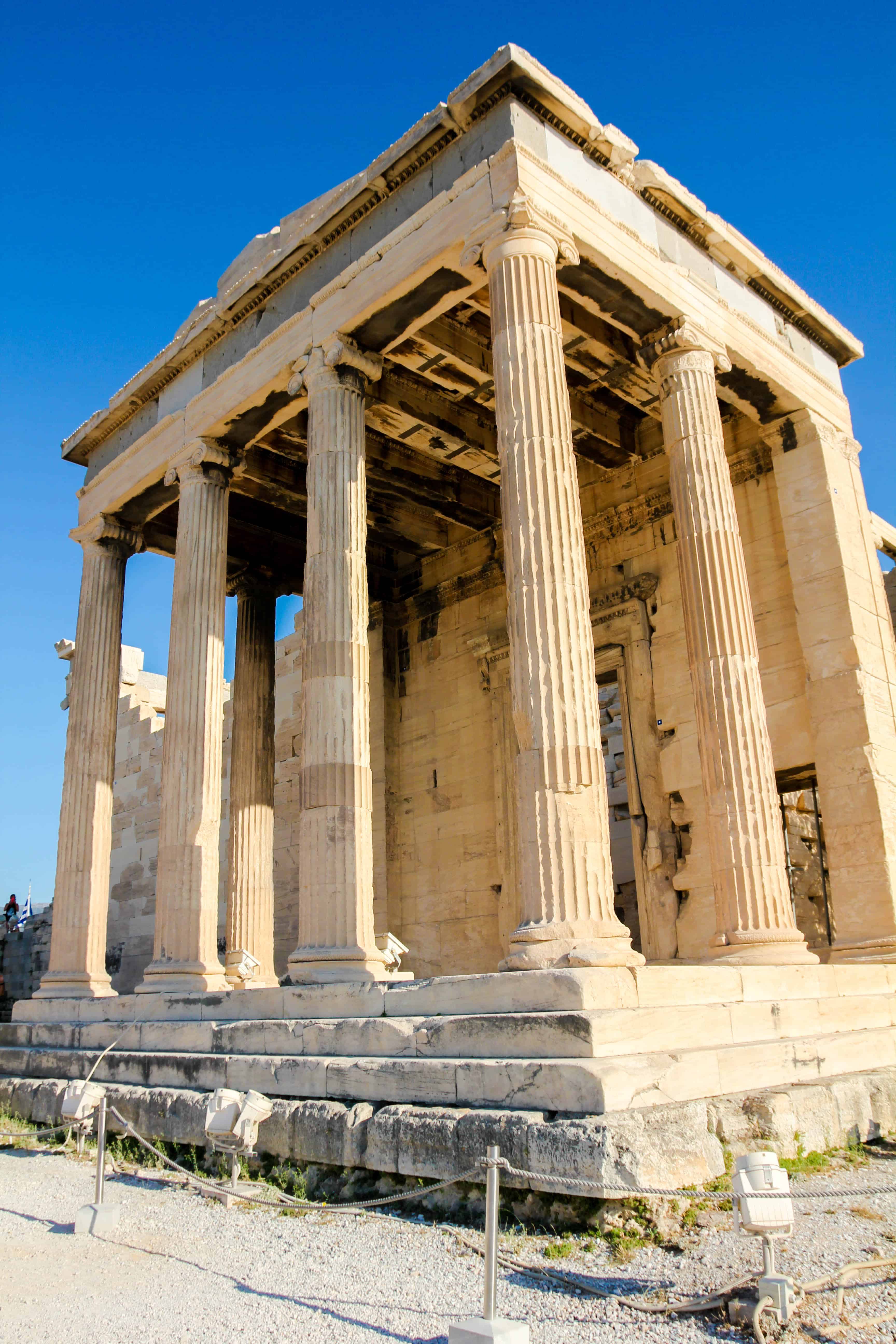


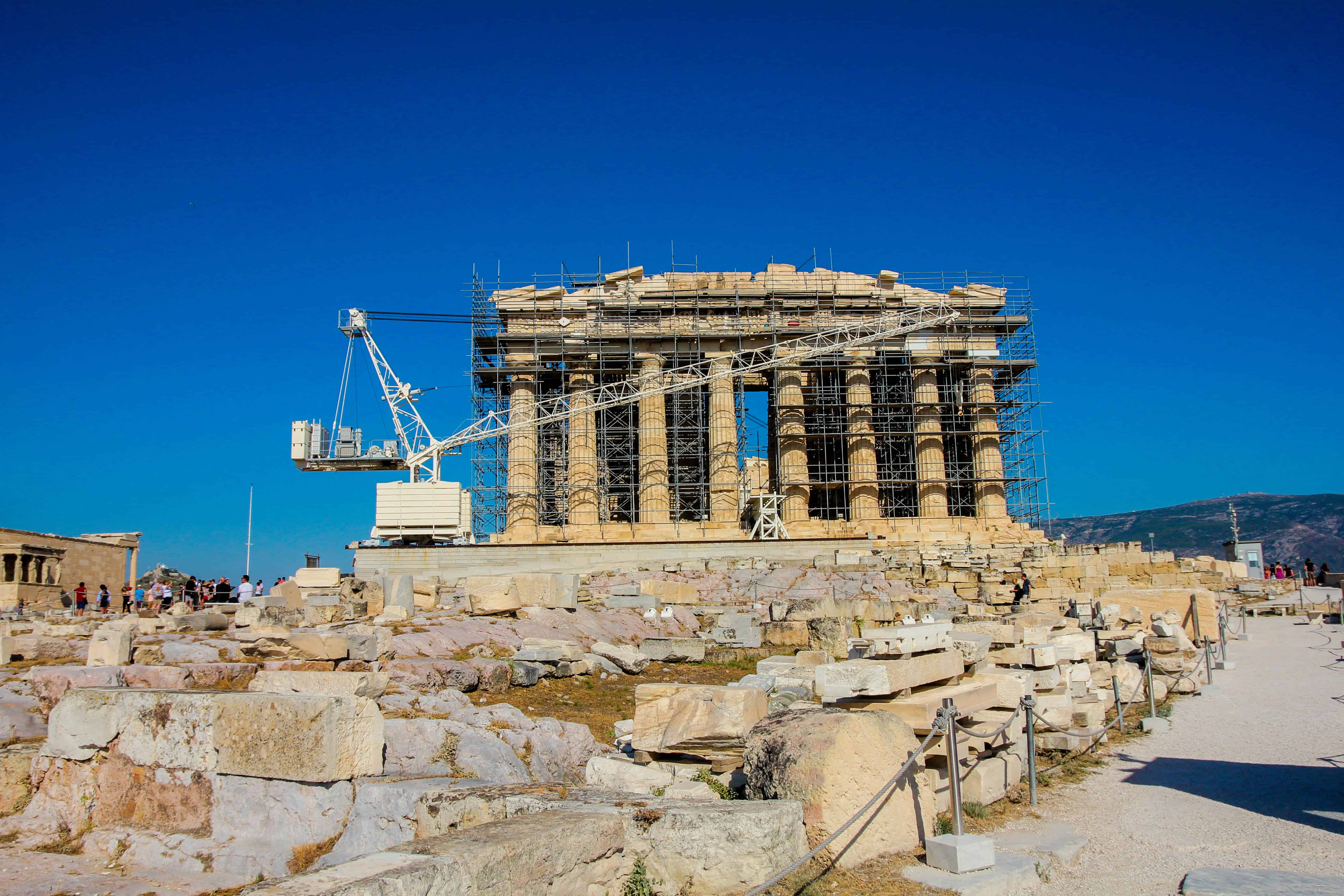
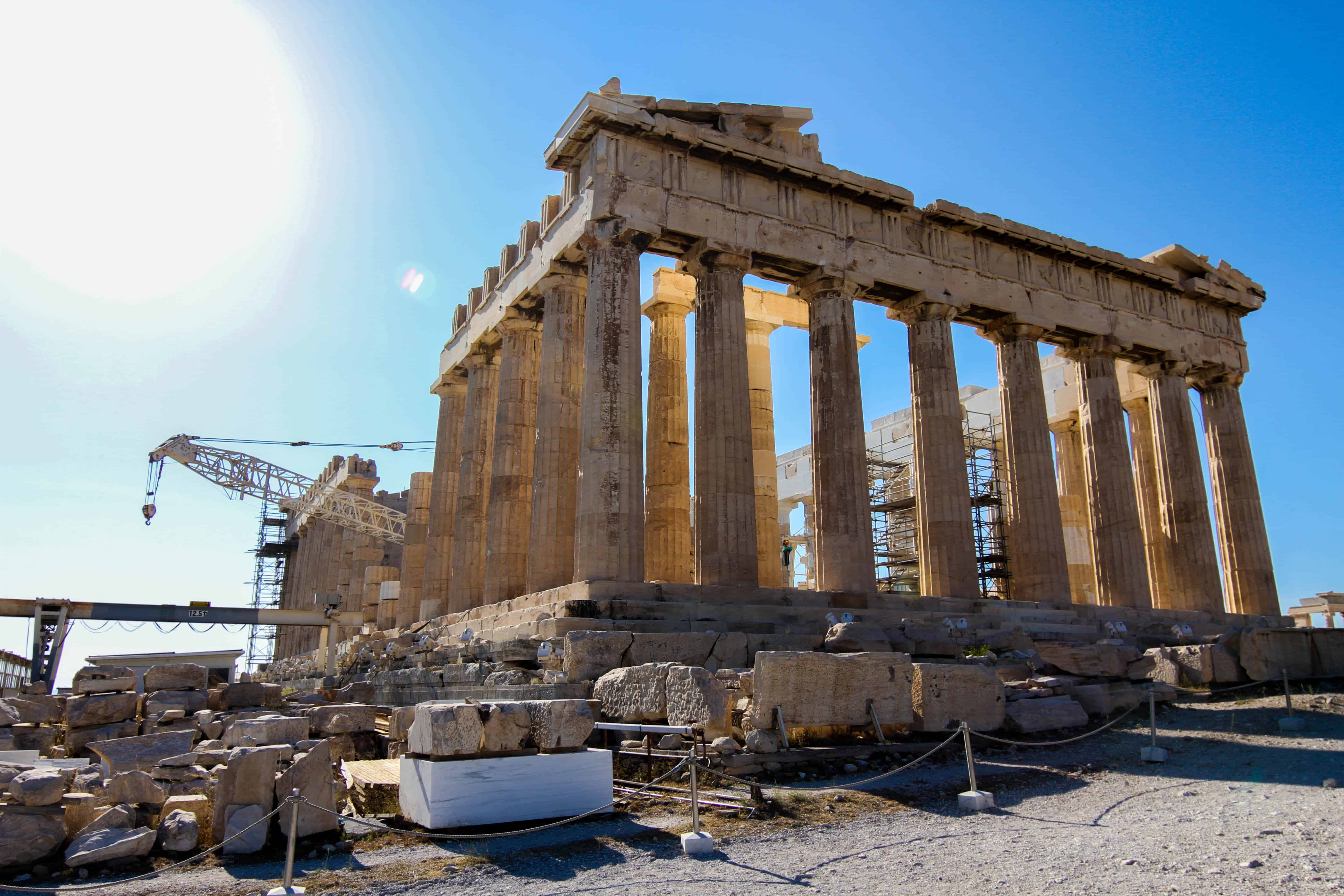
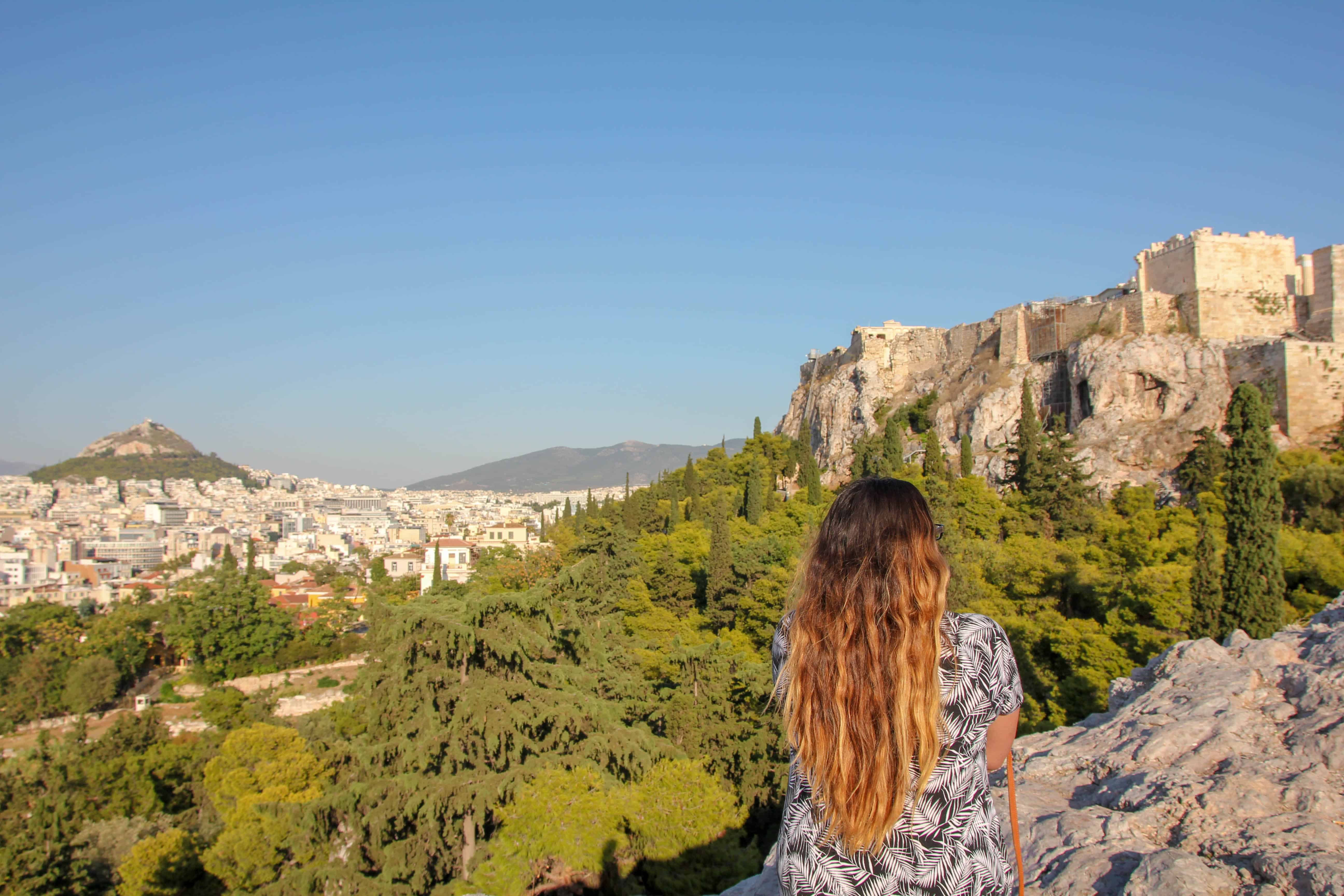
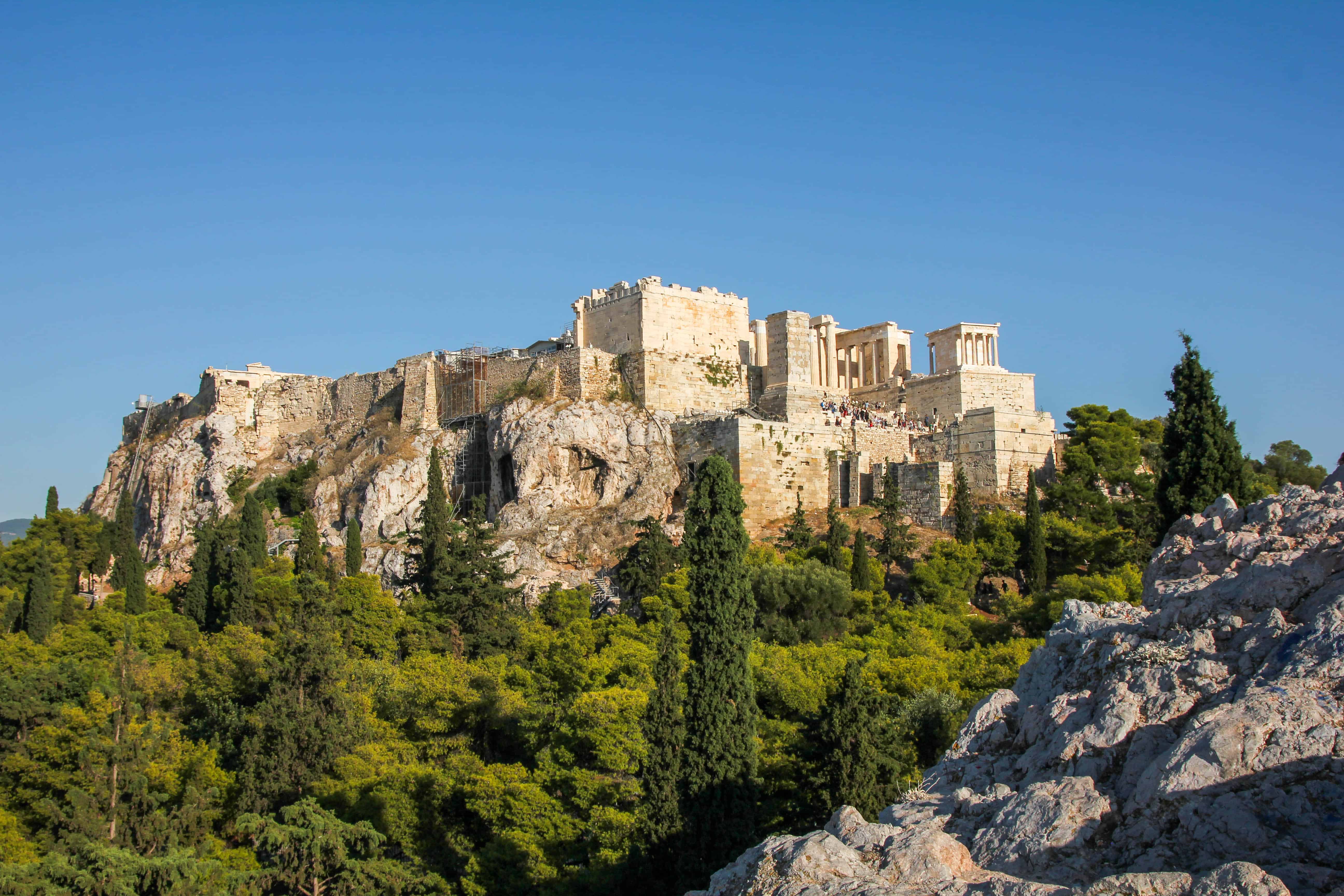
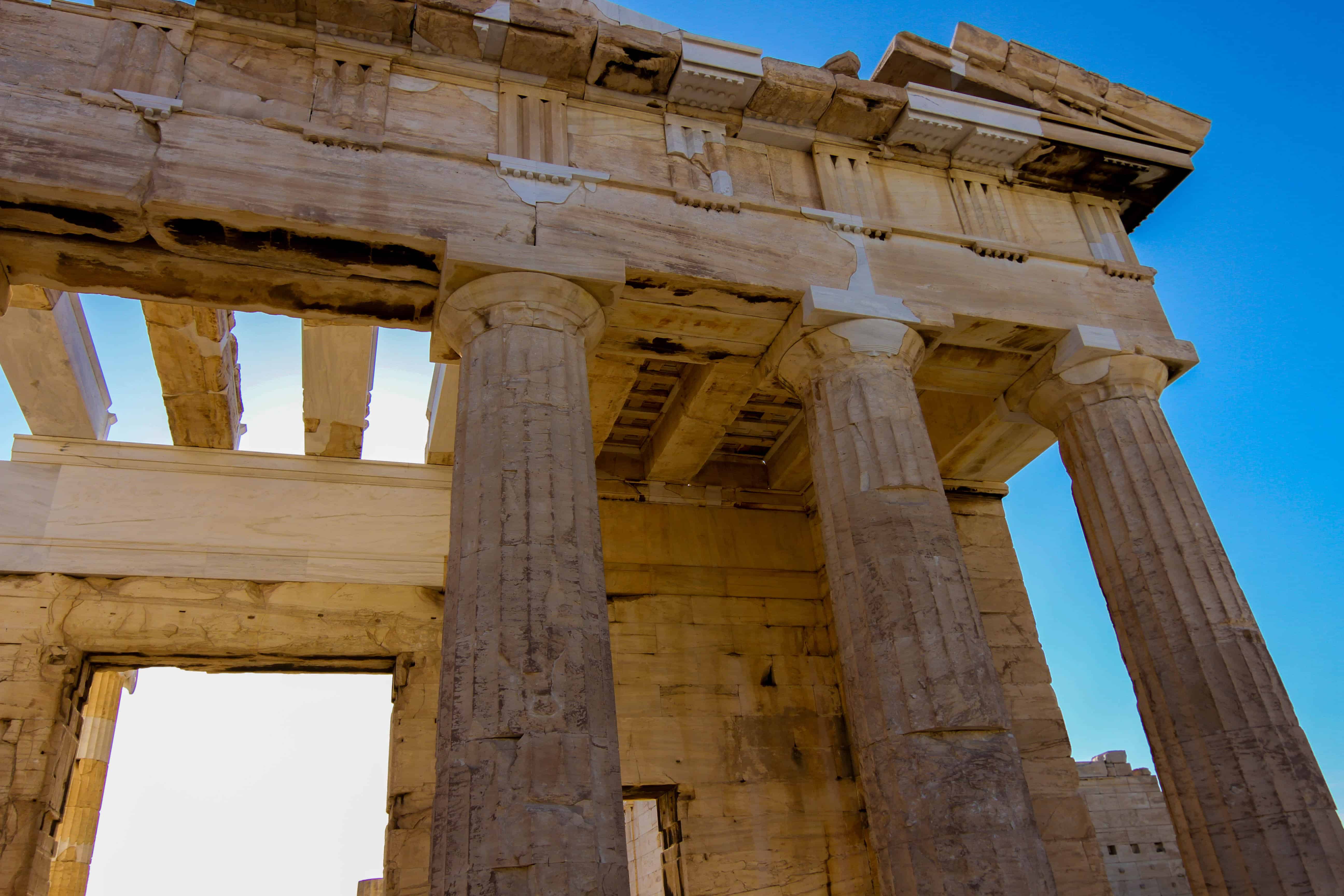

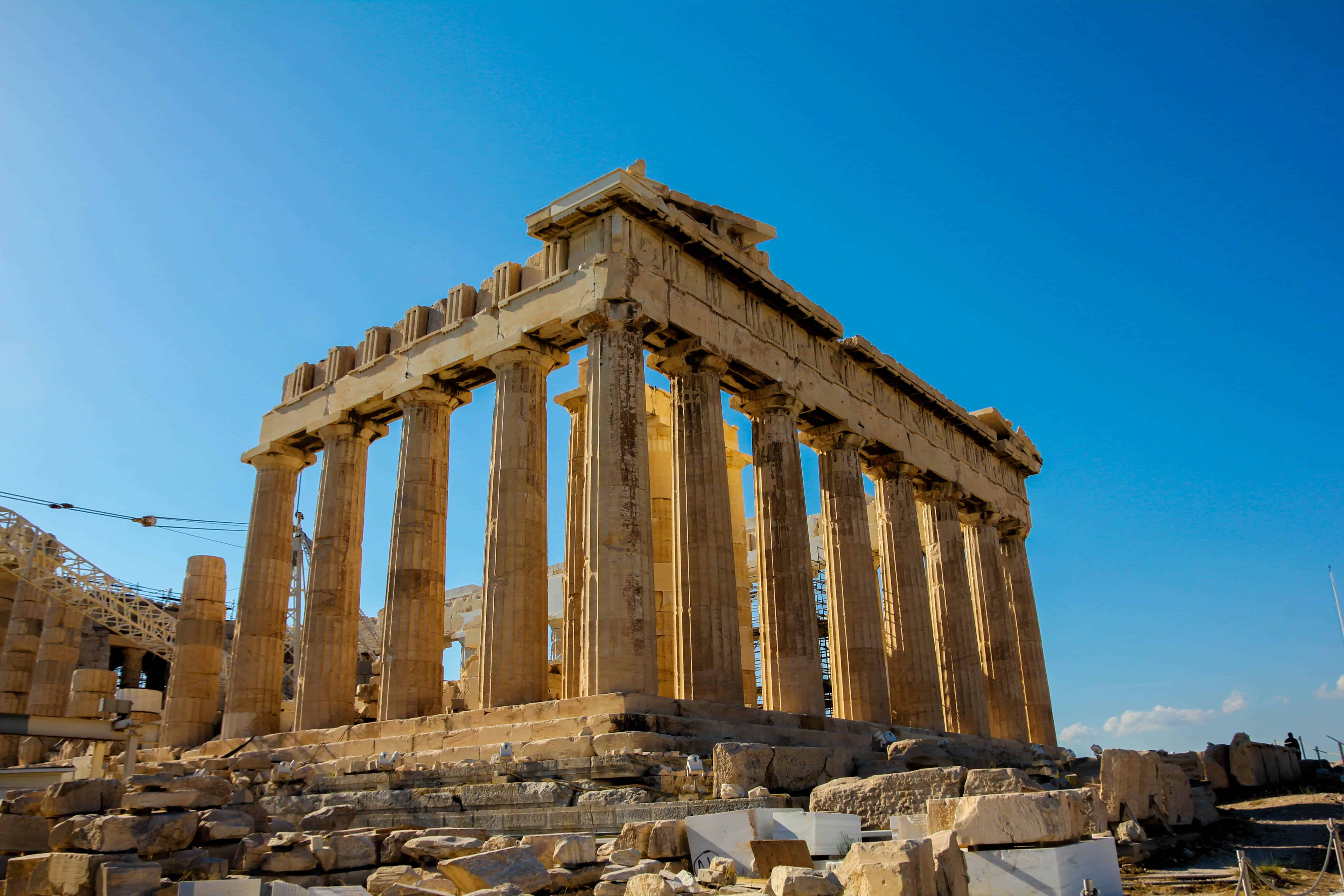
Thanks, it is very informative